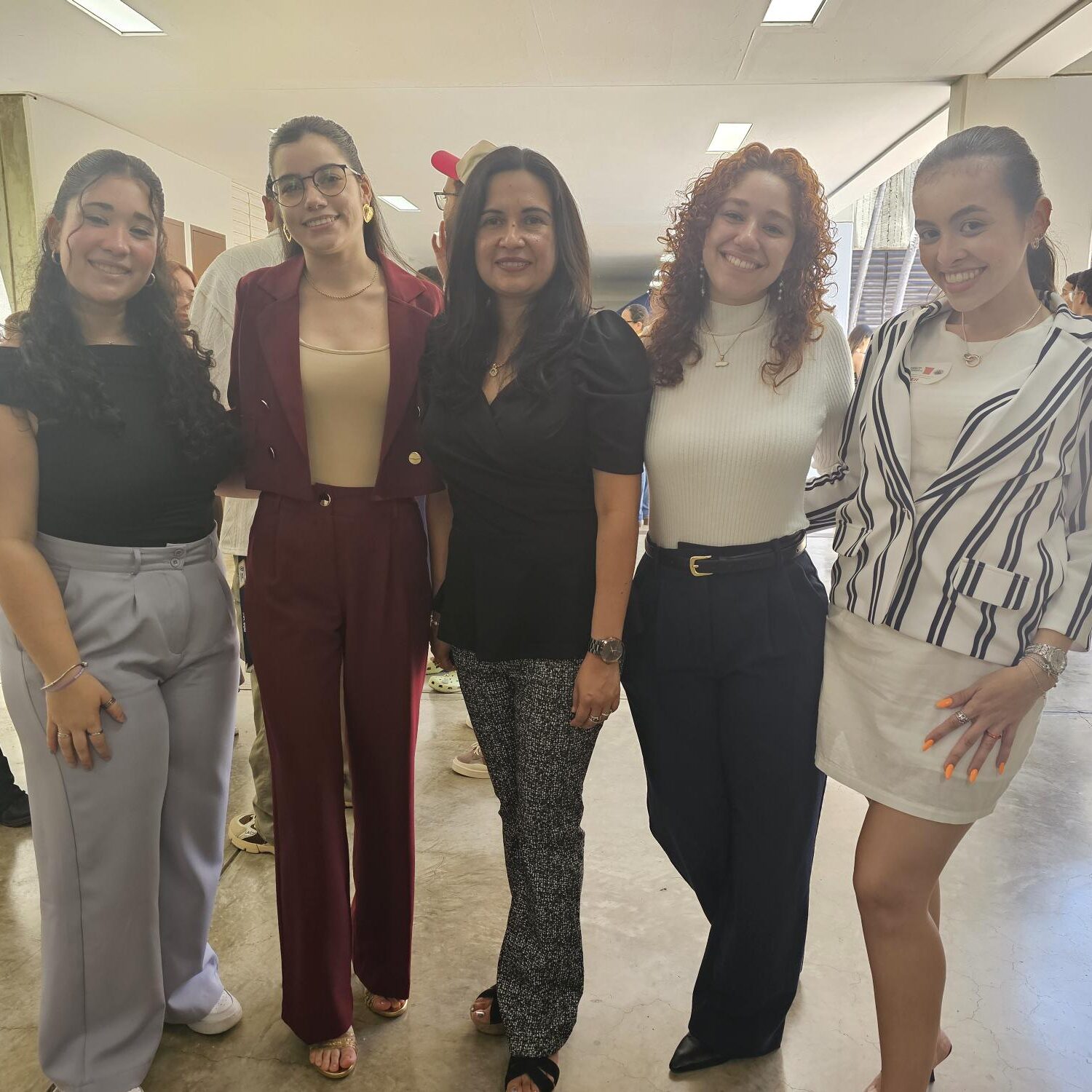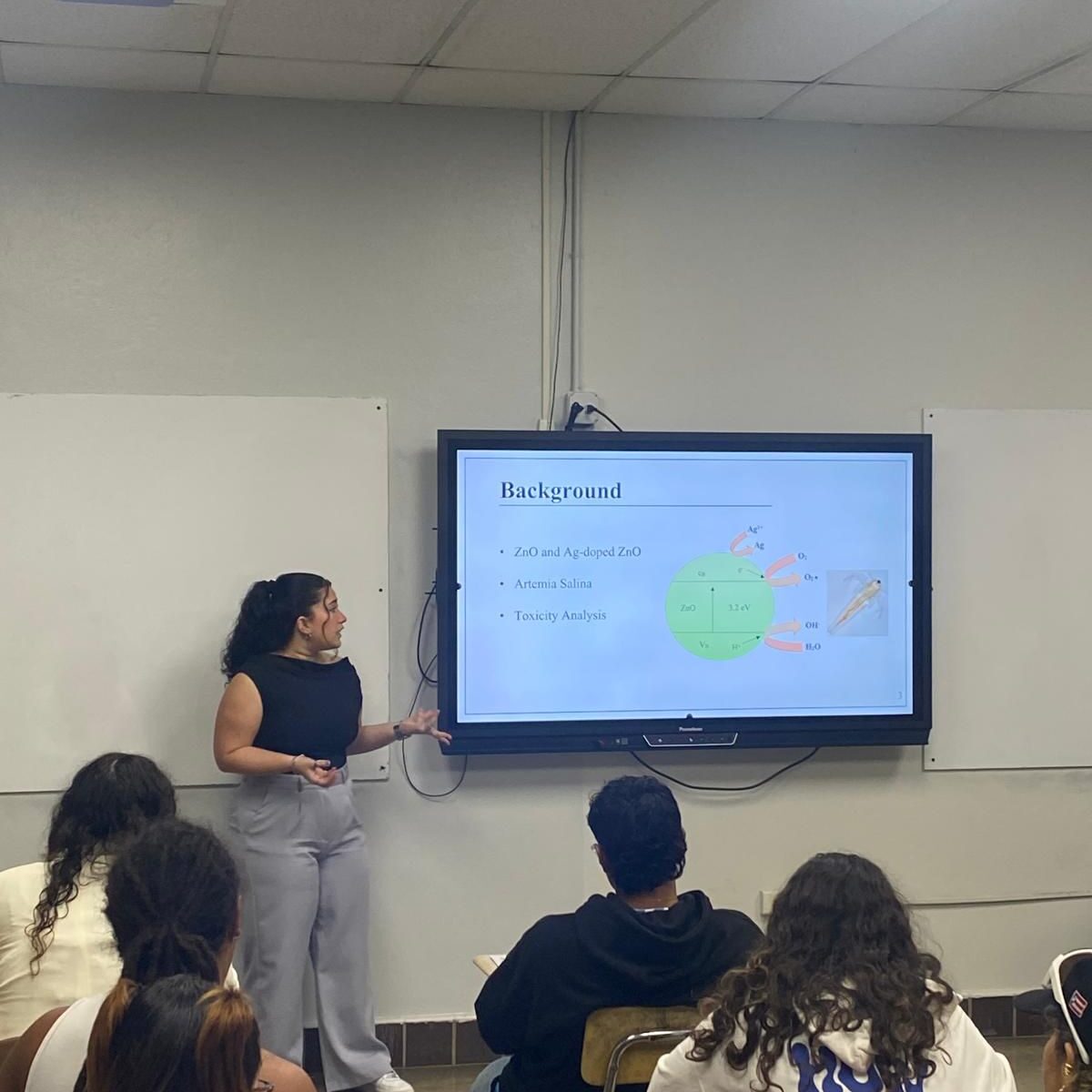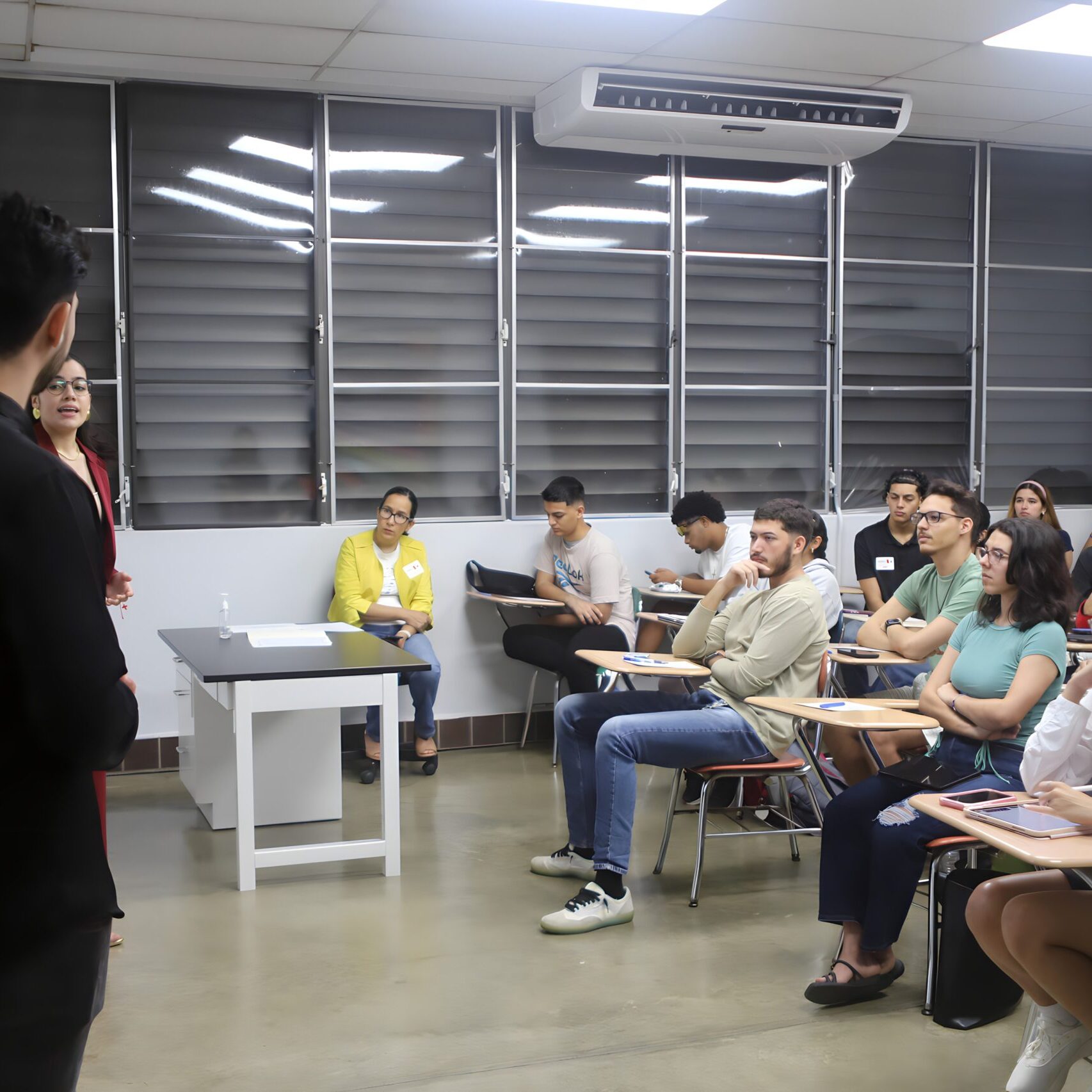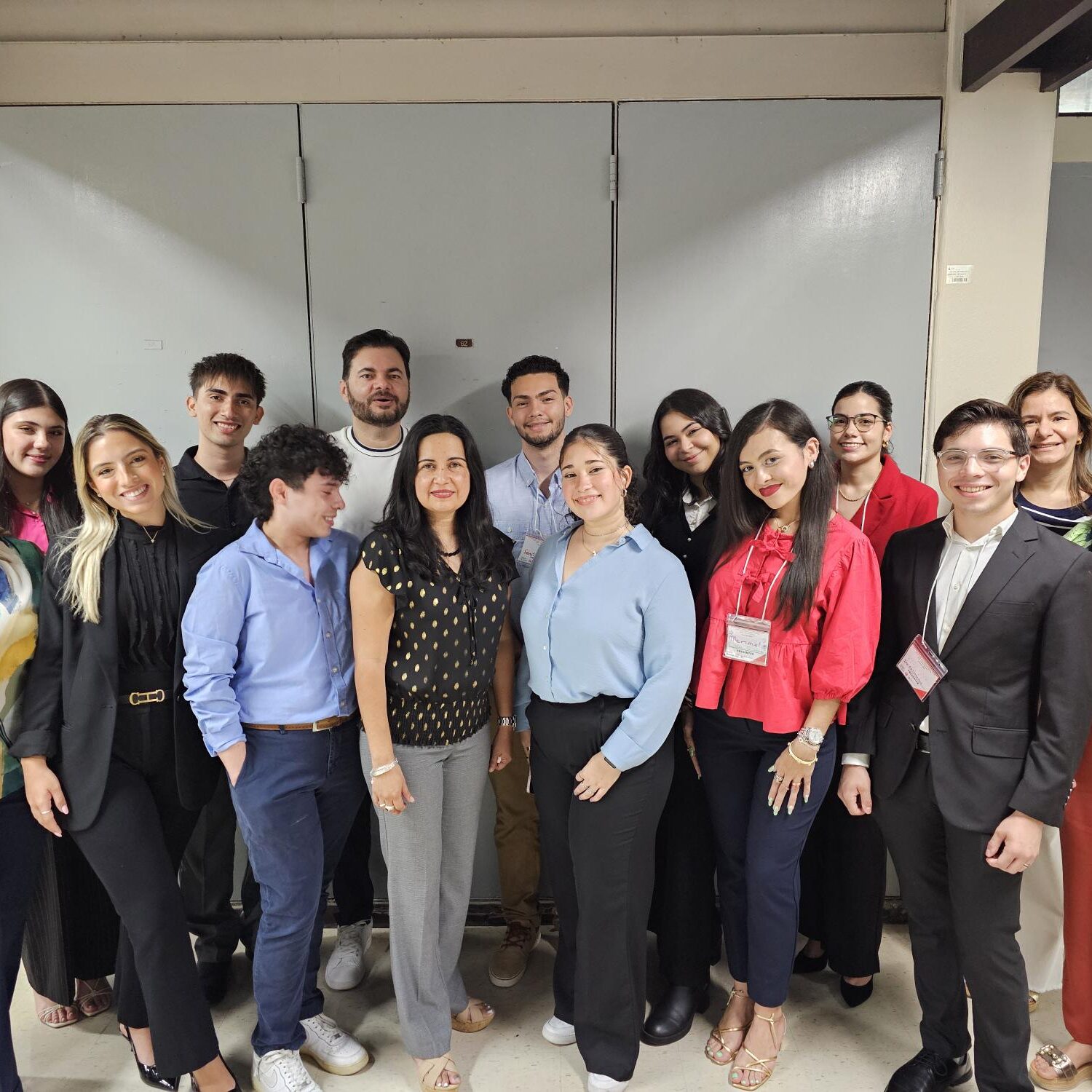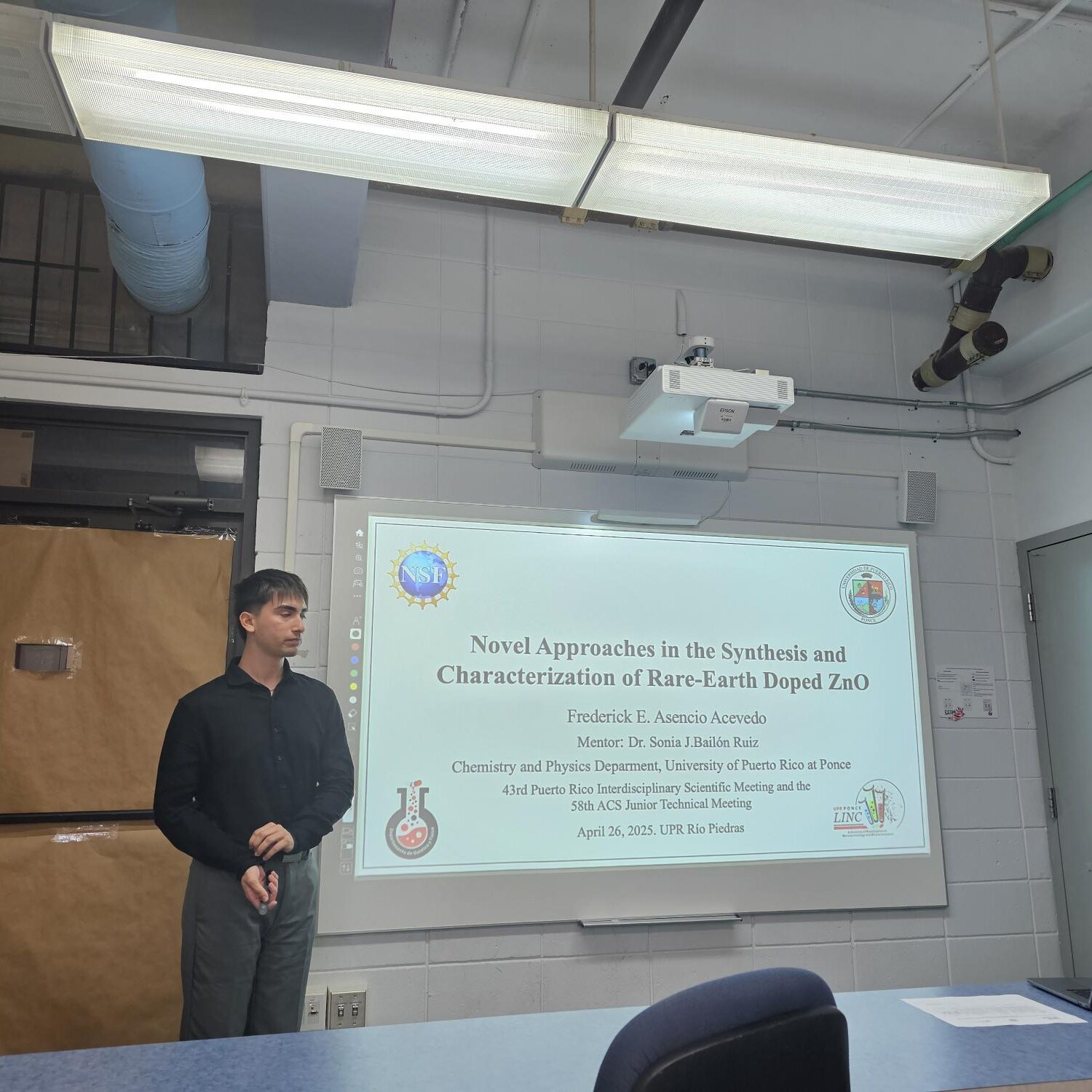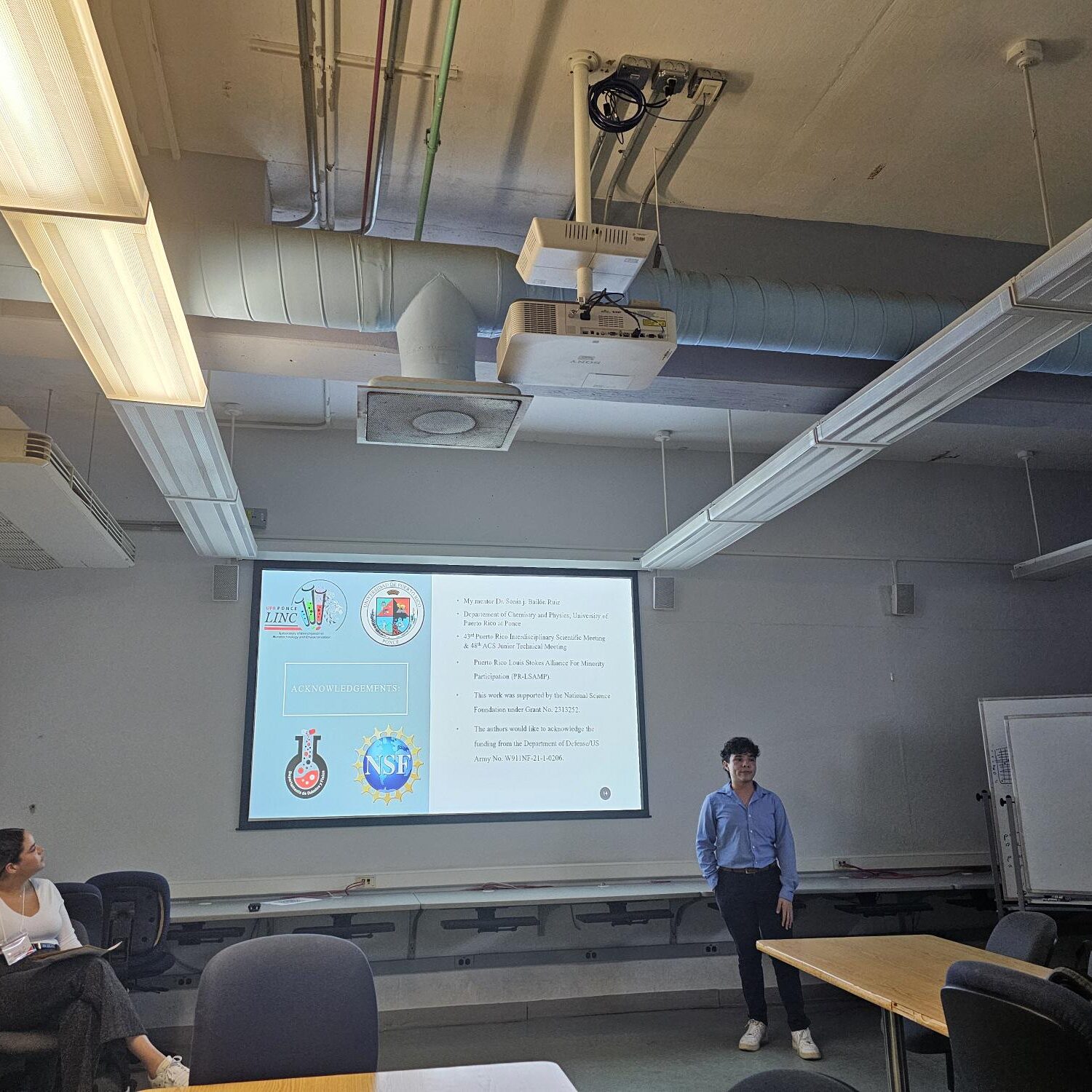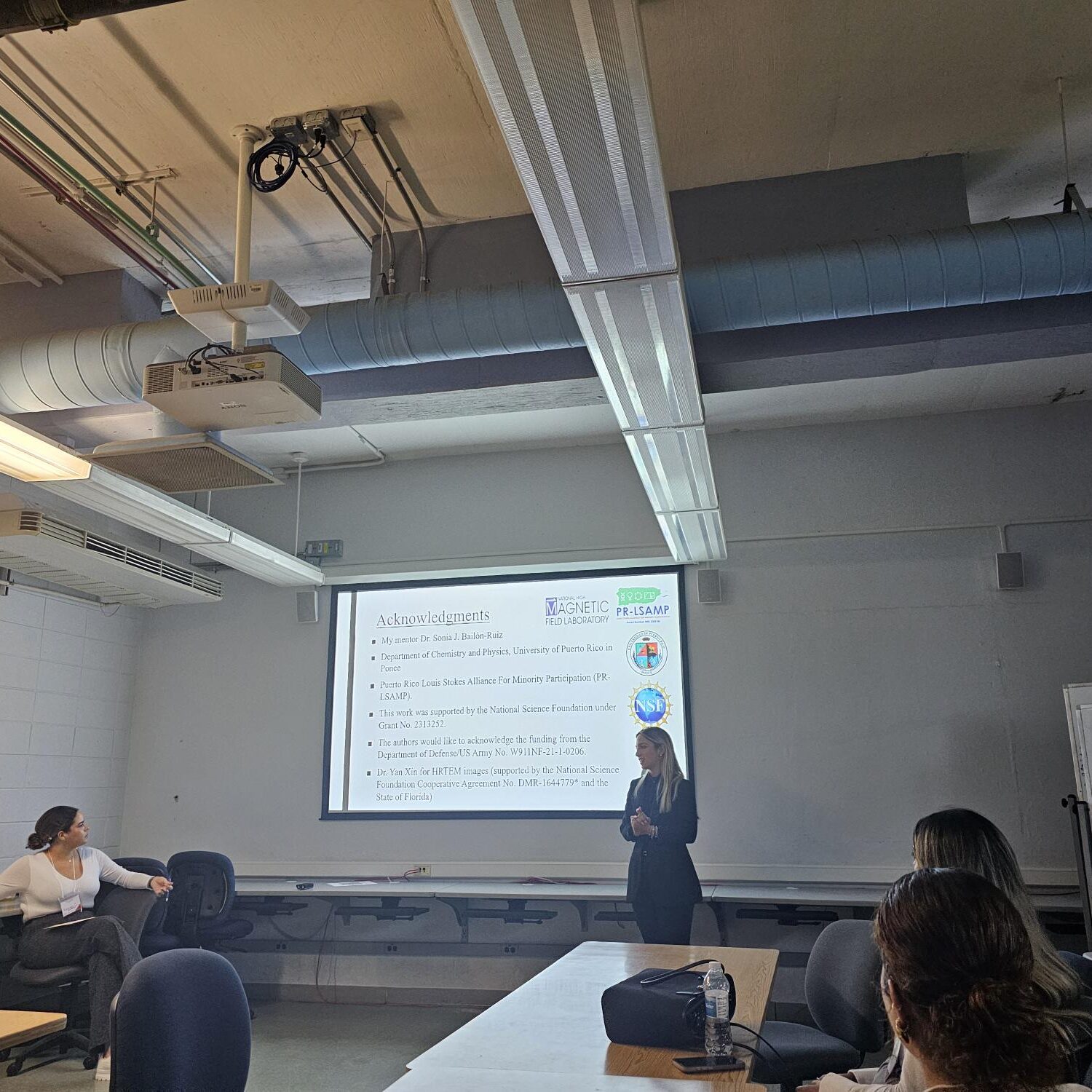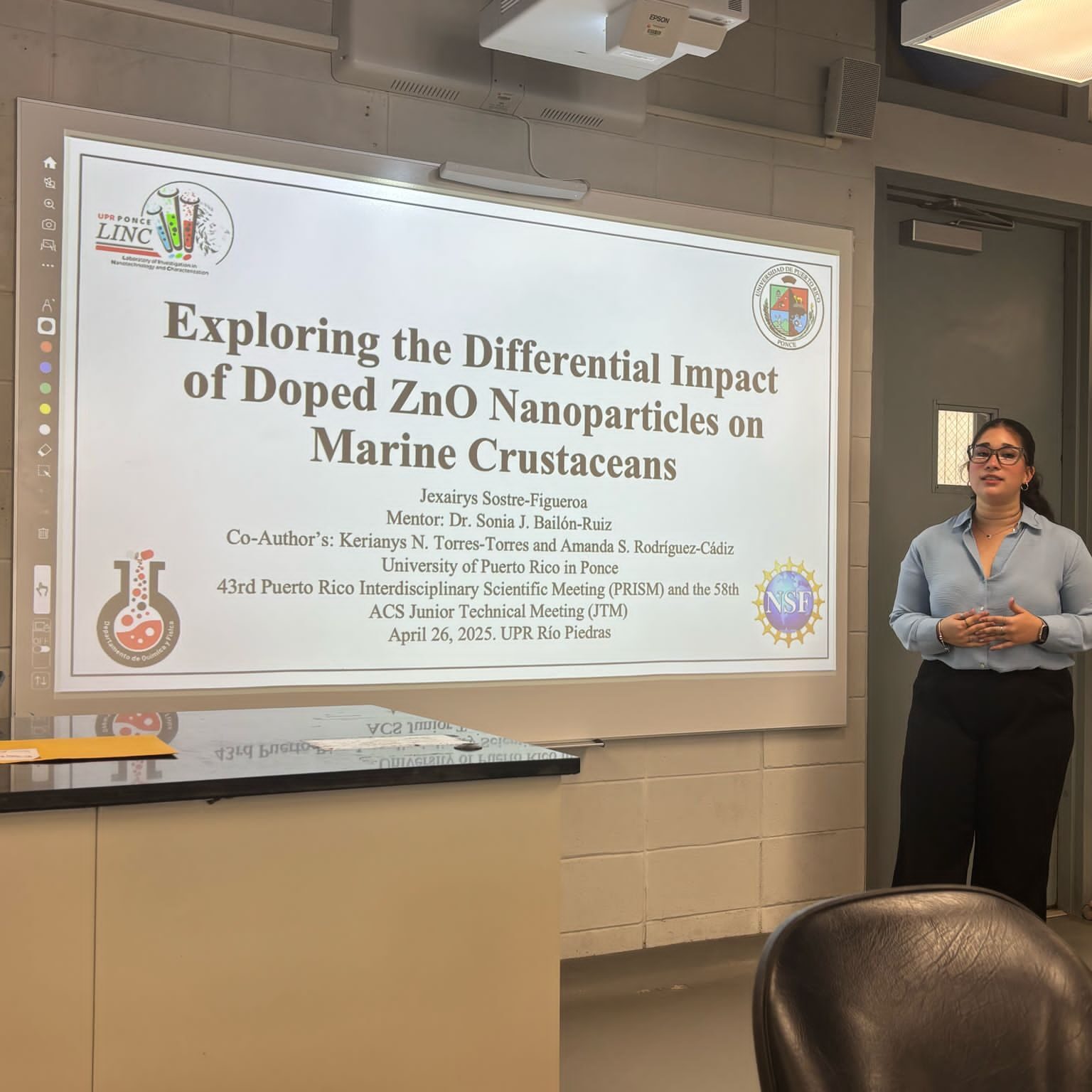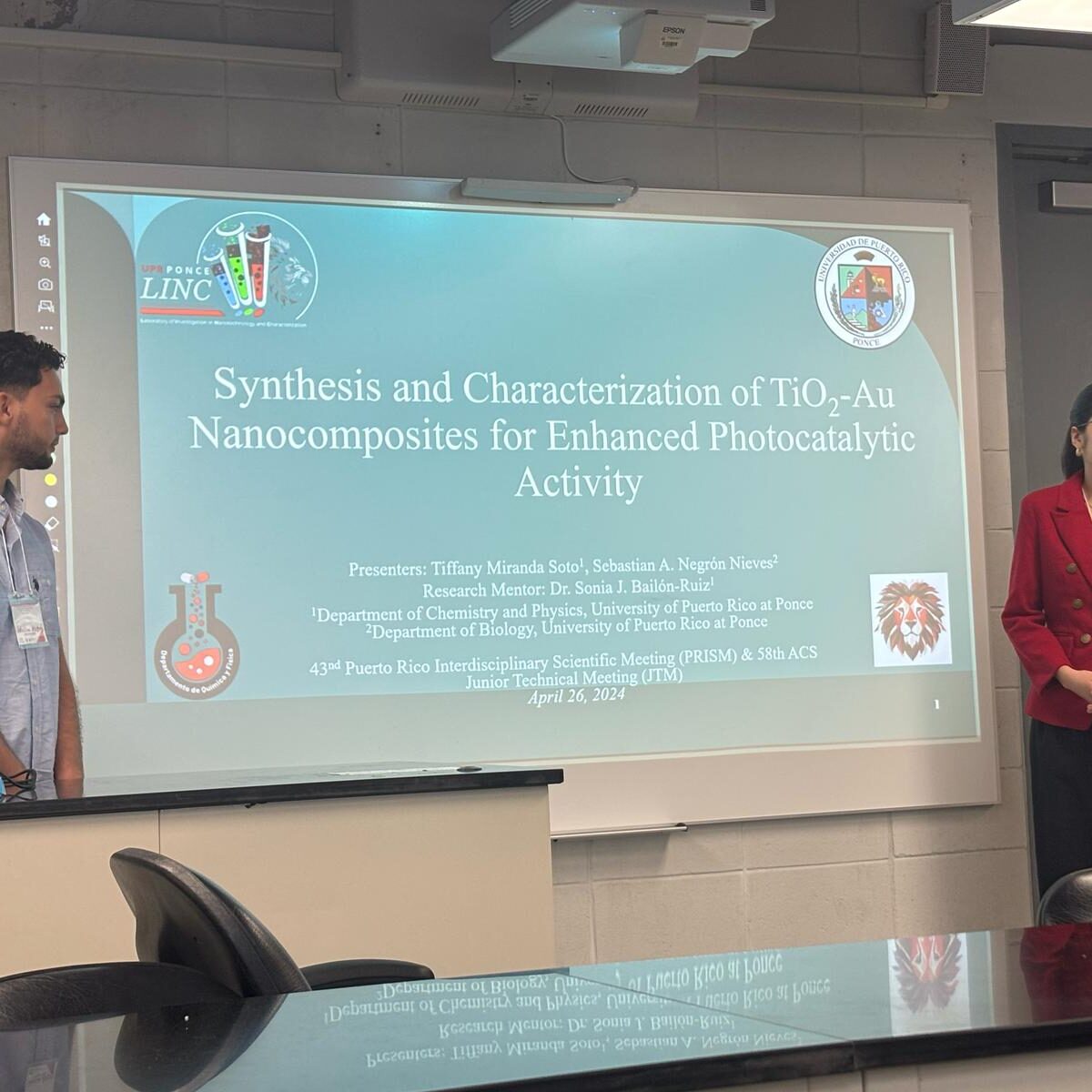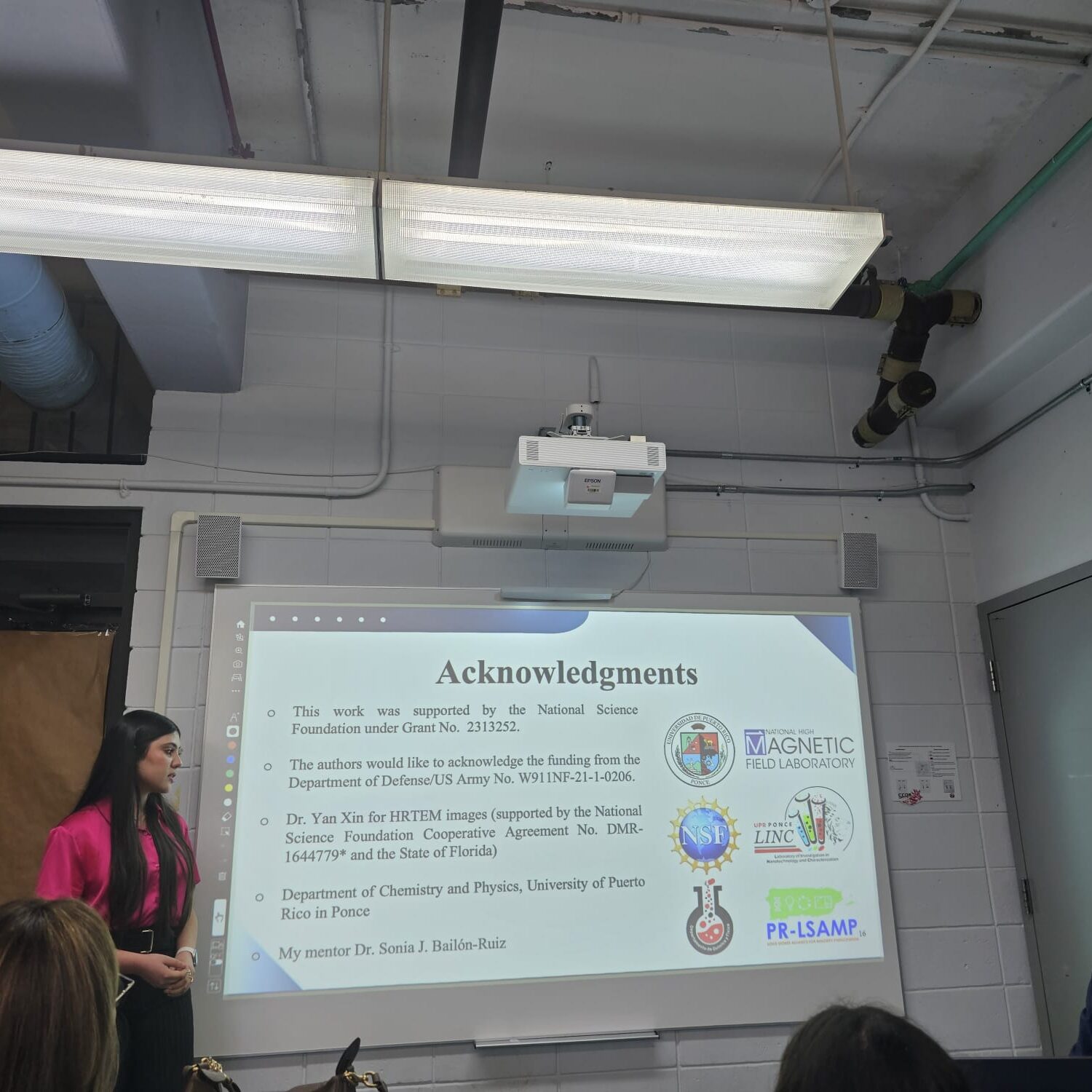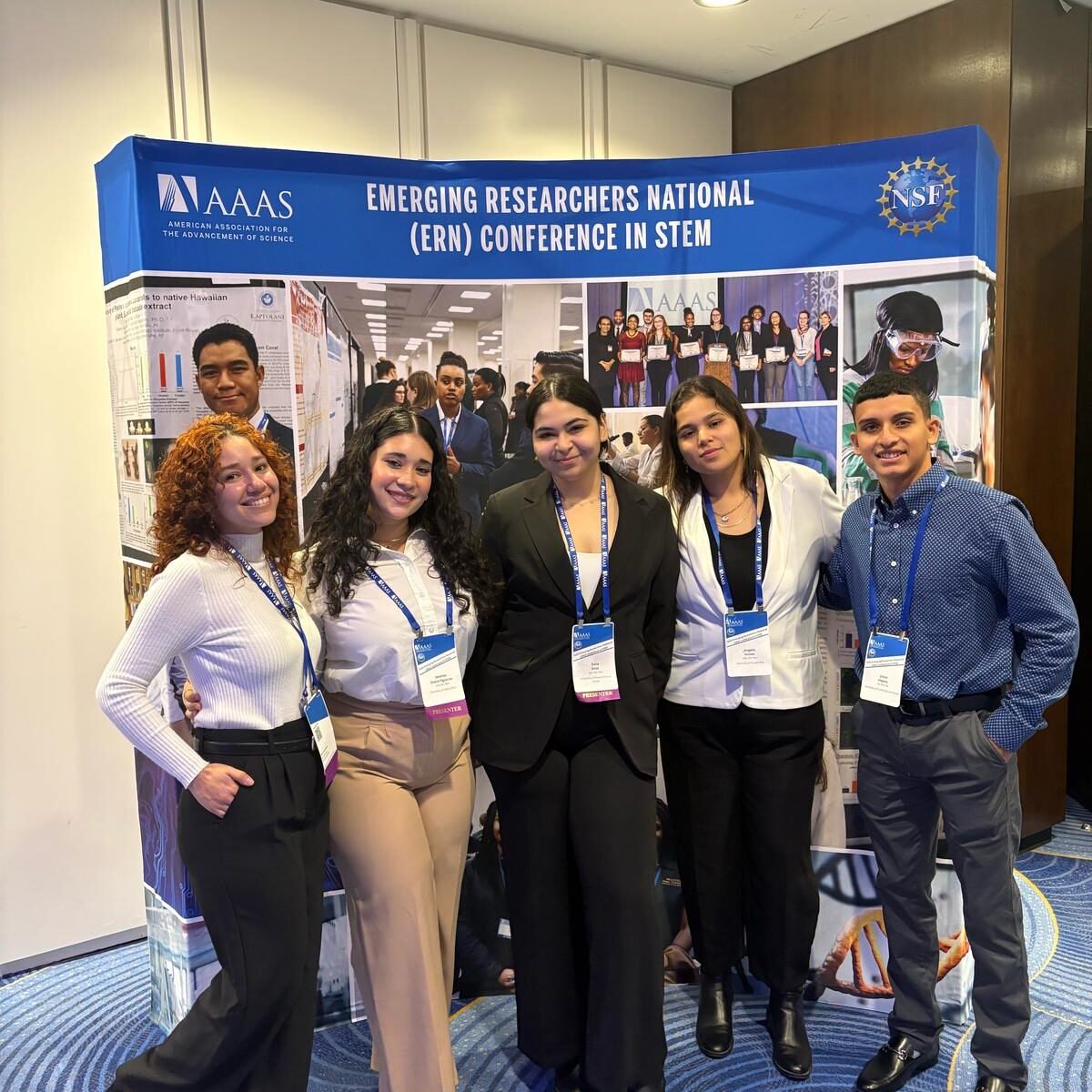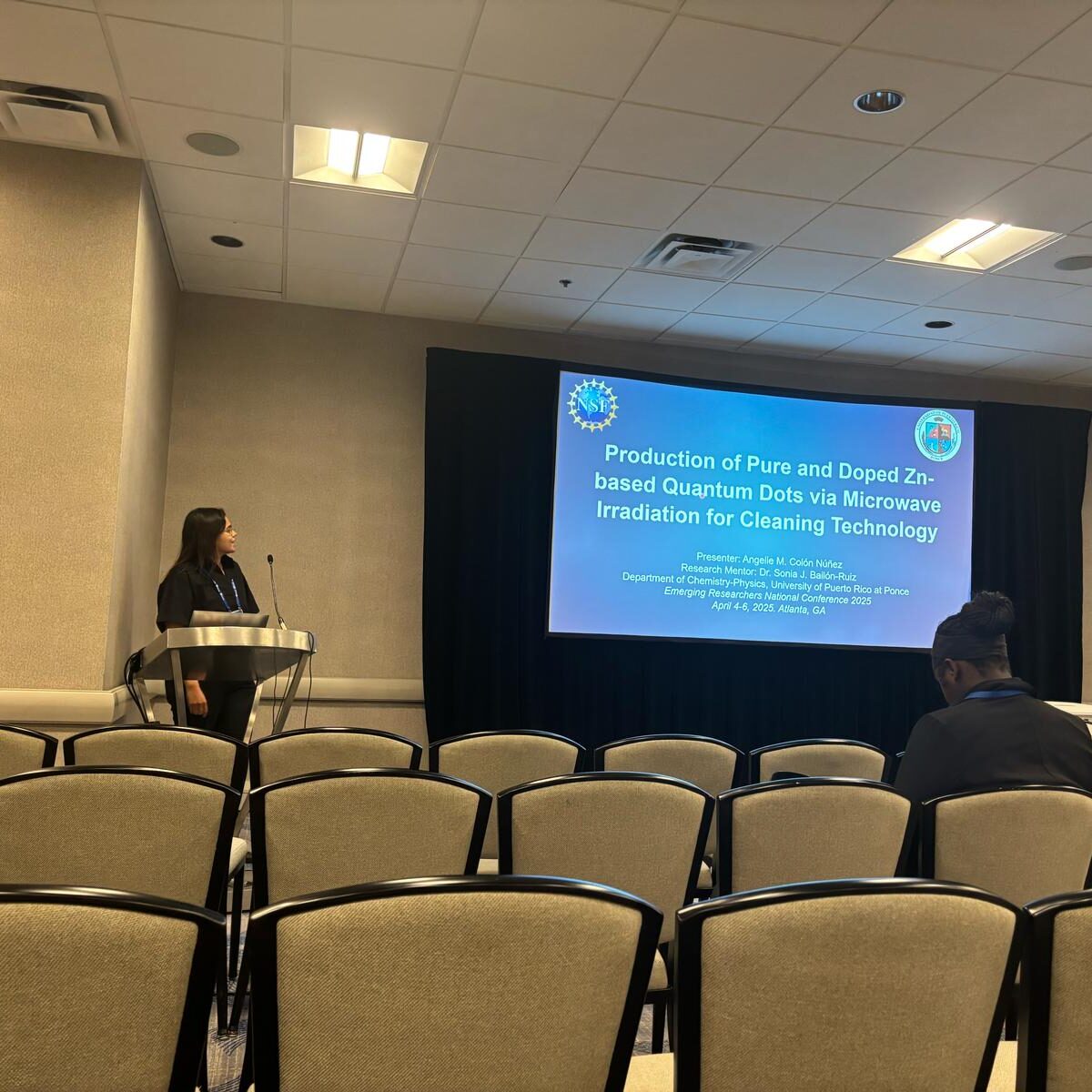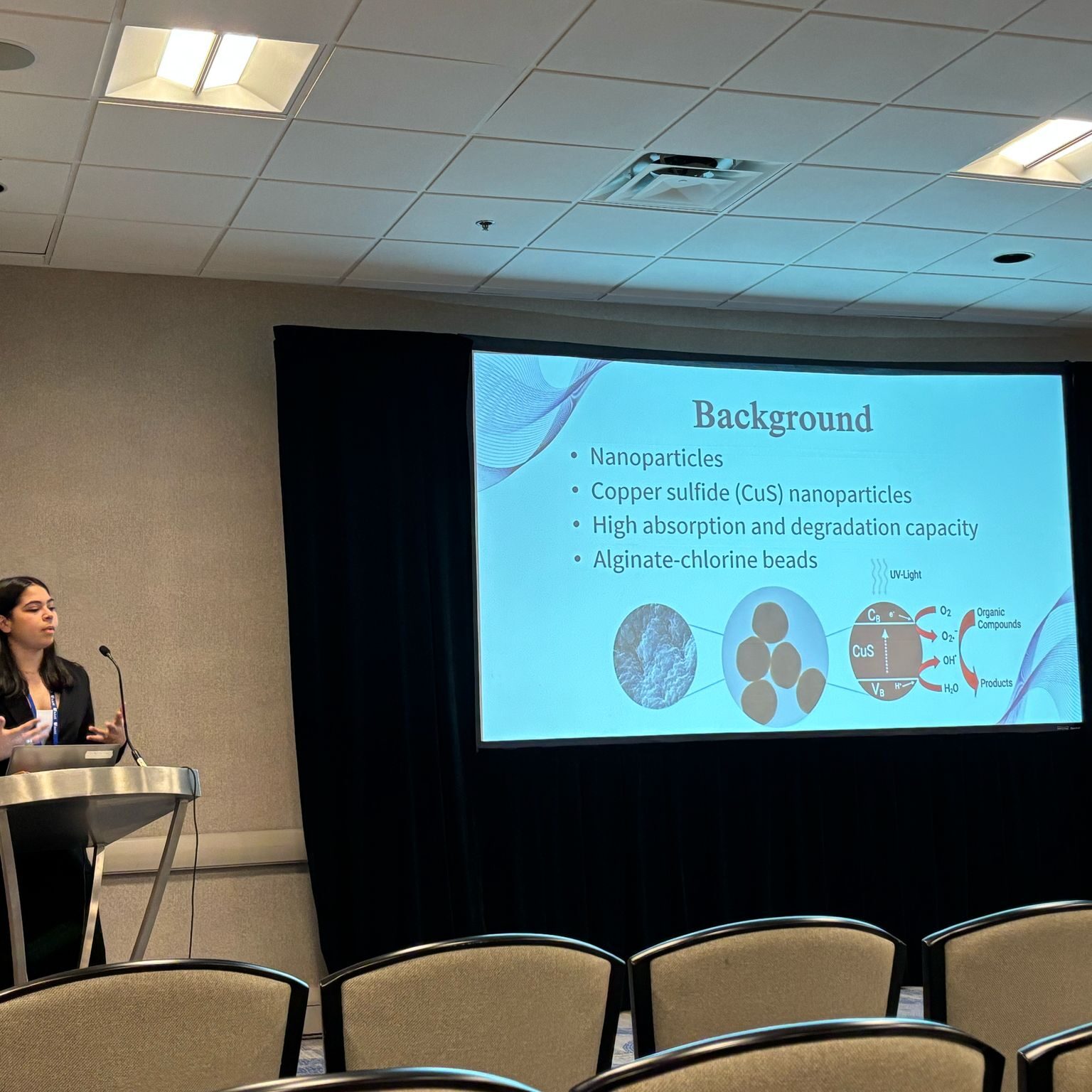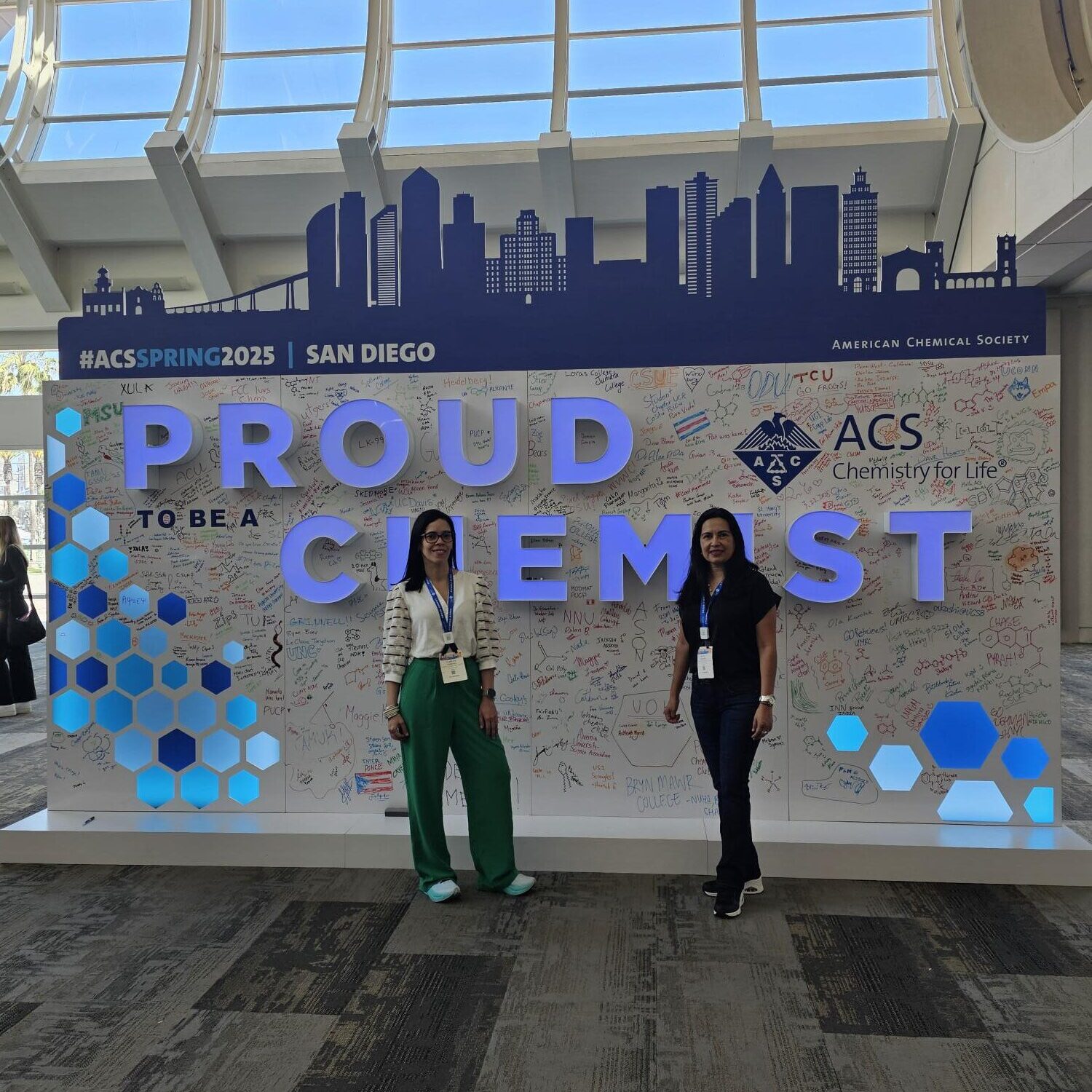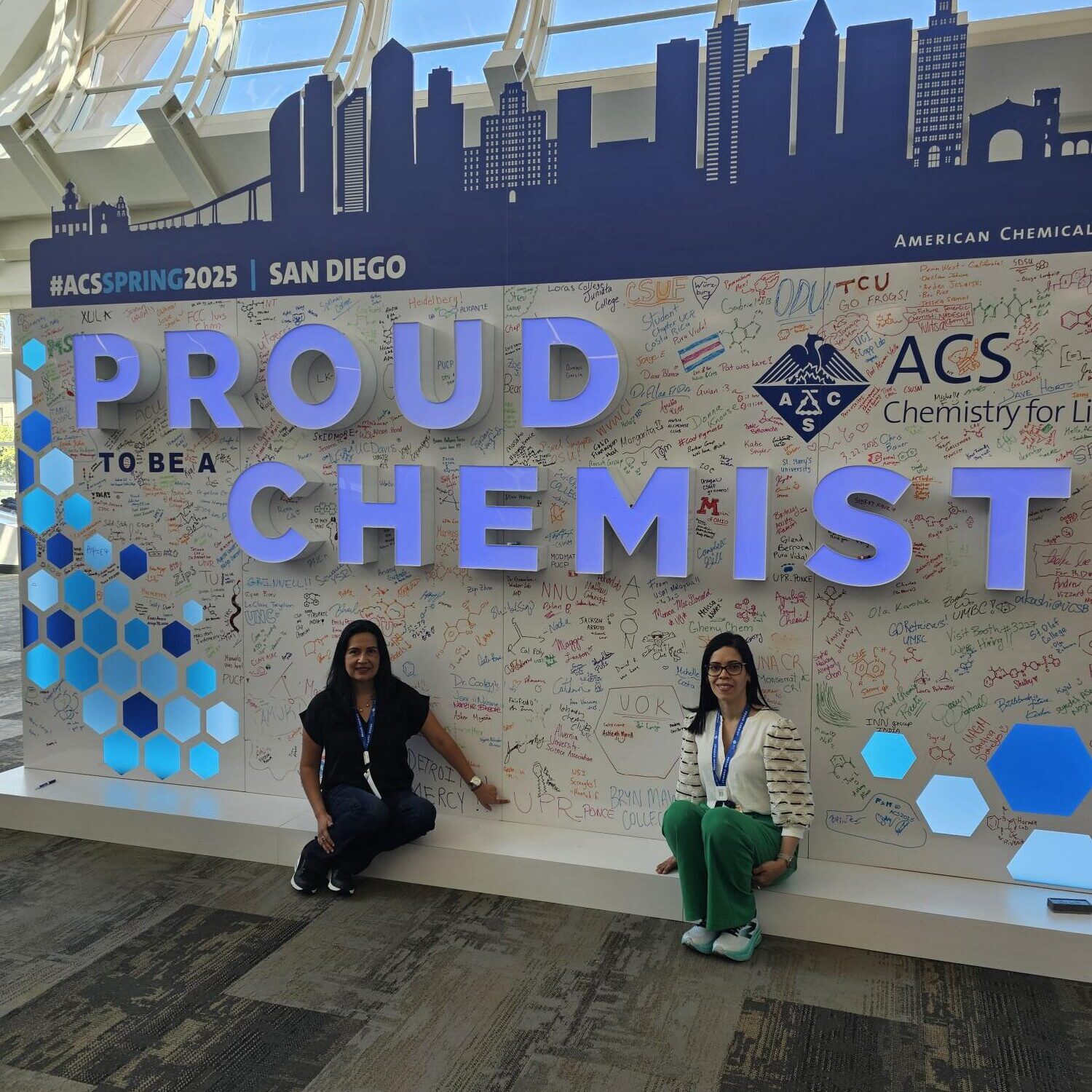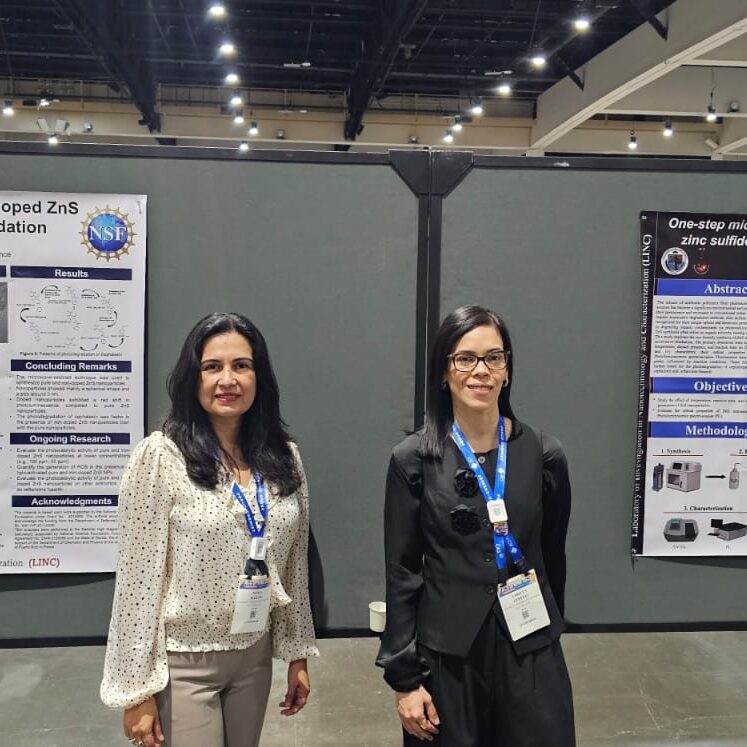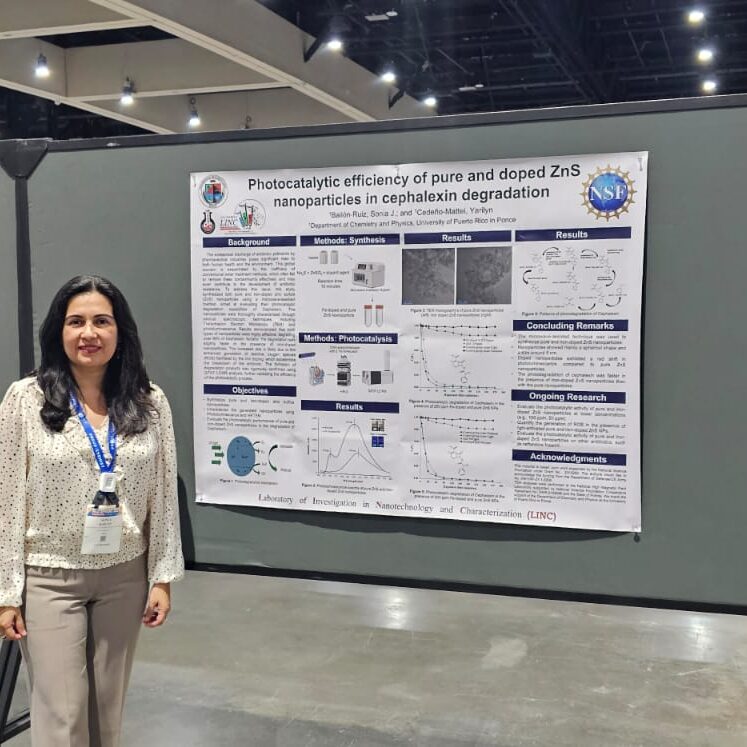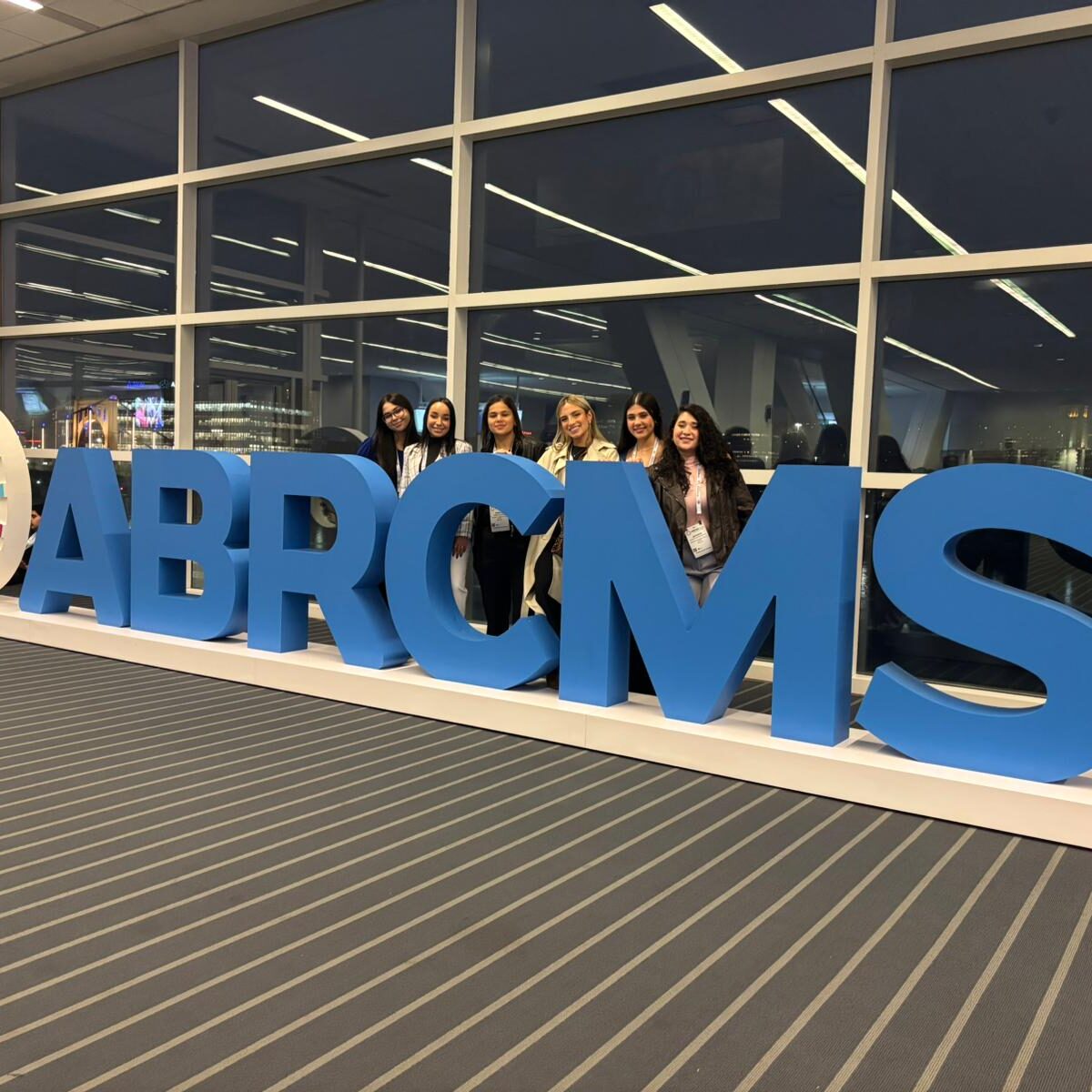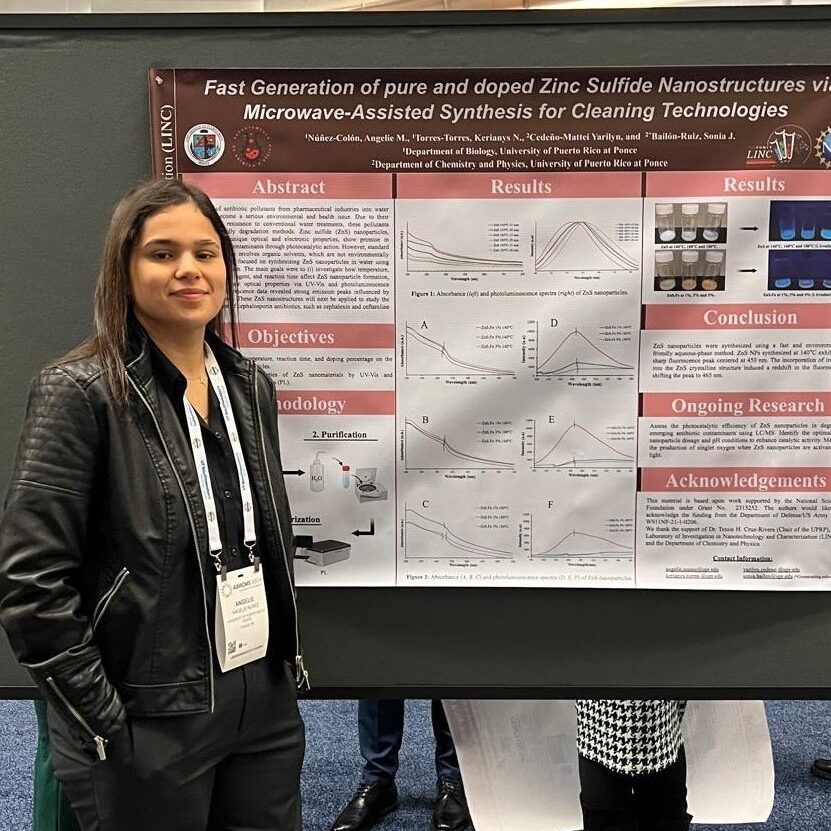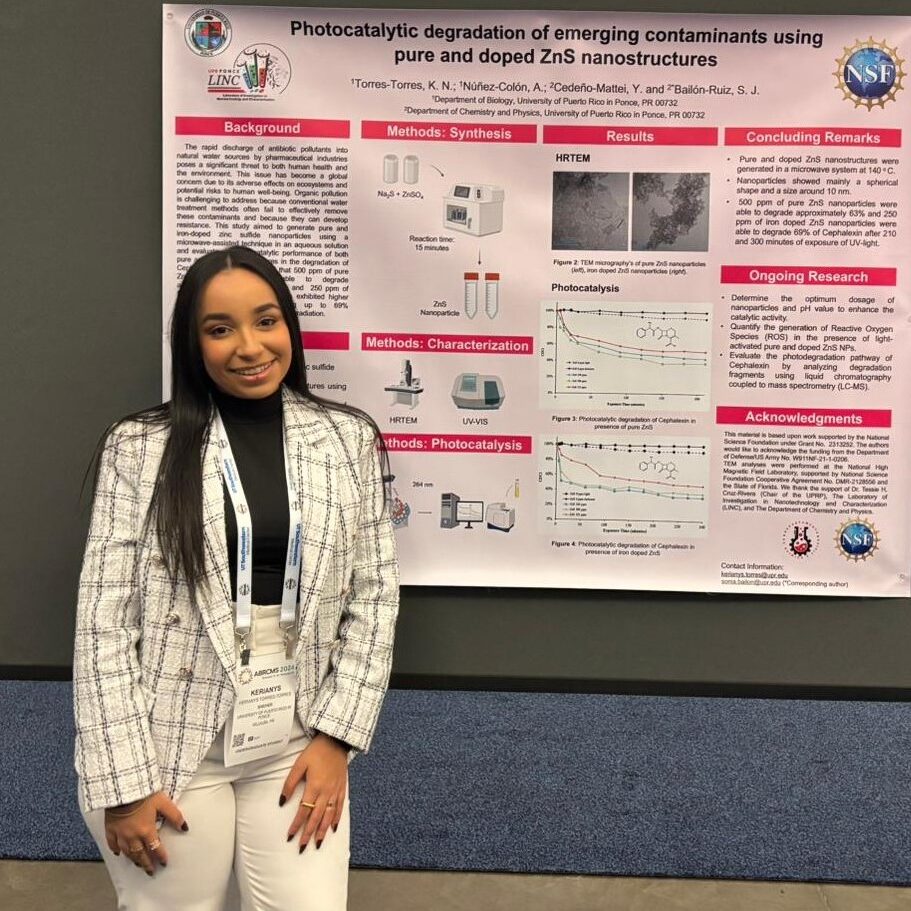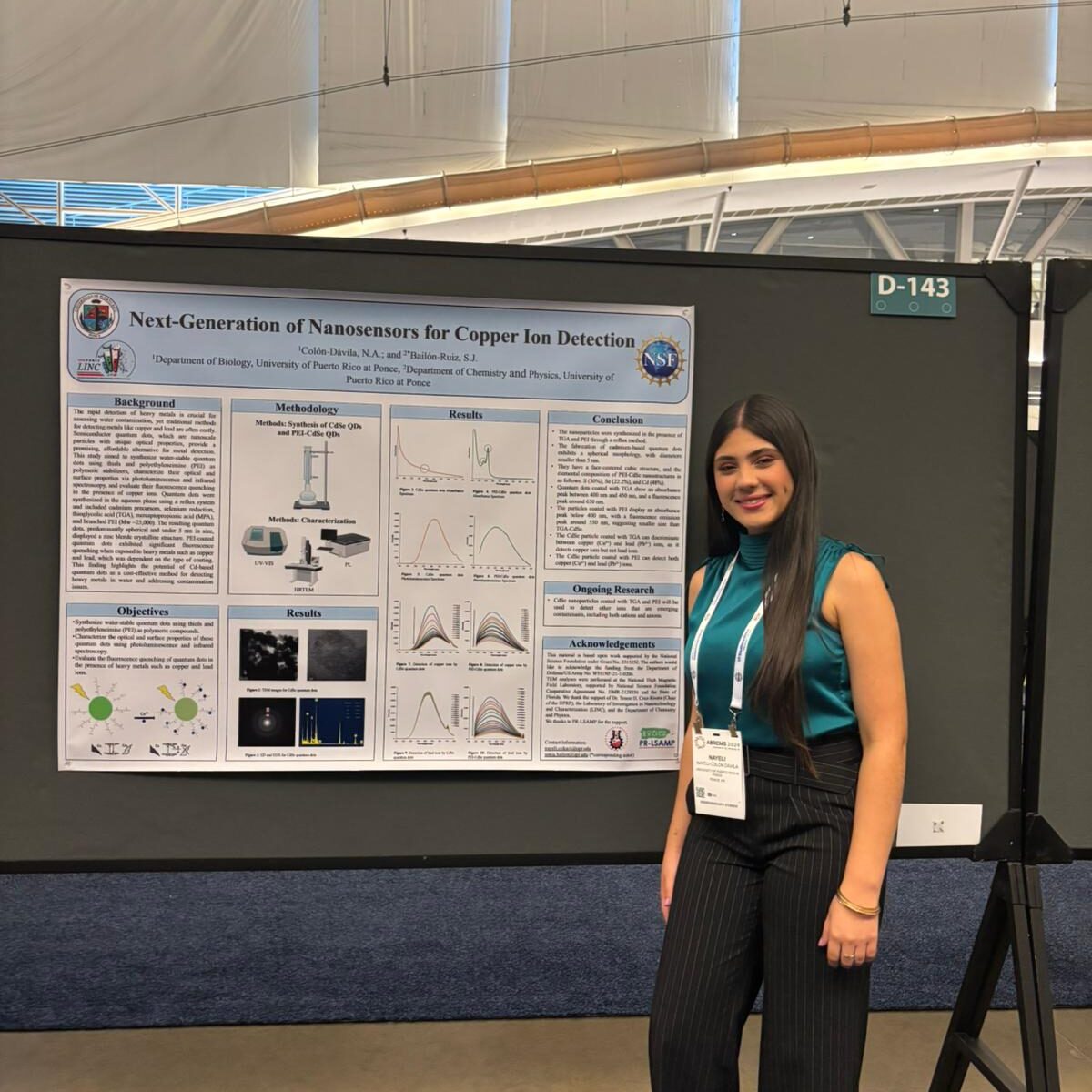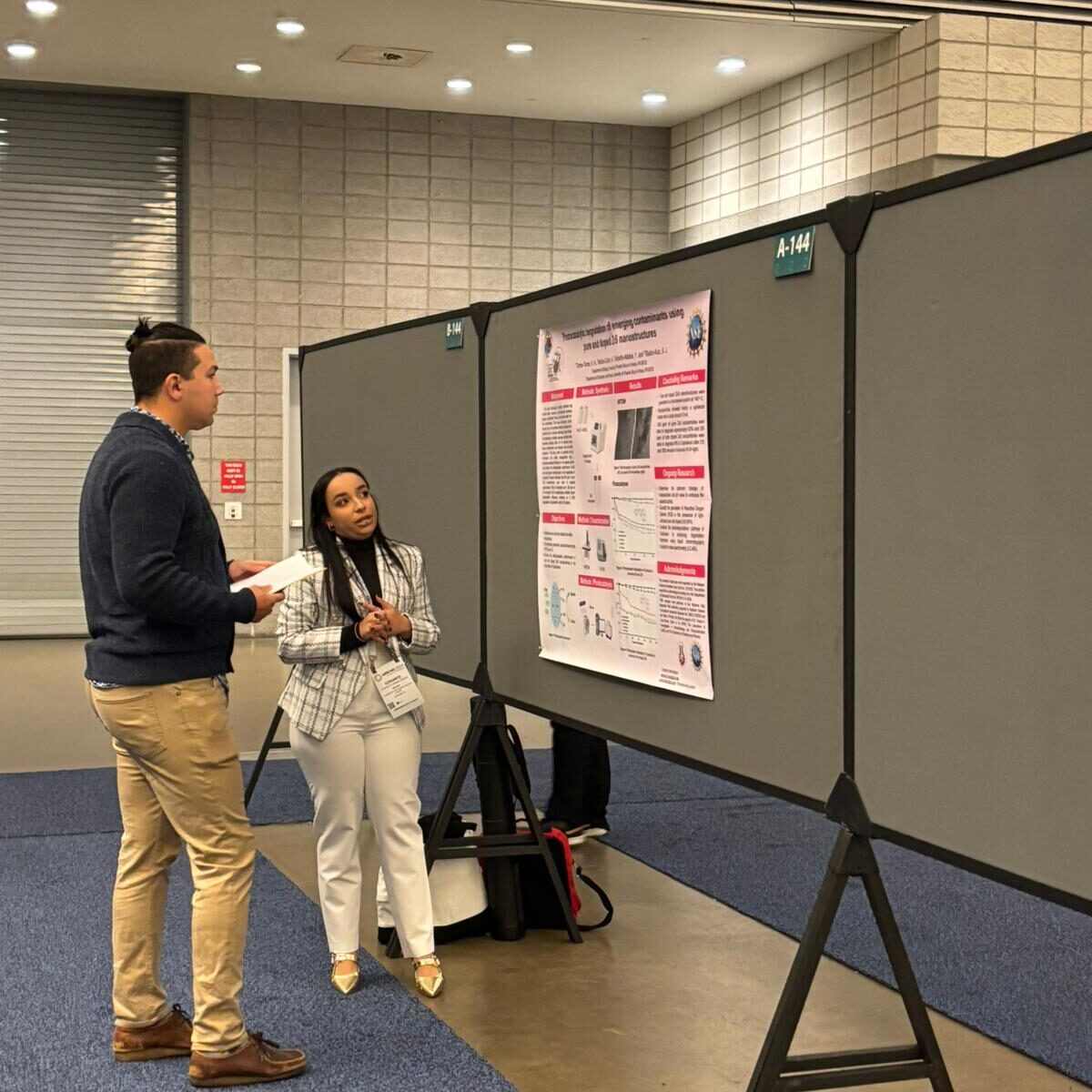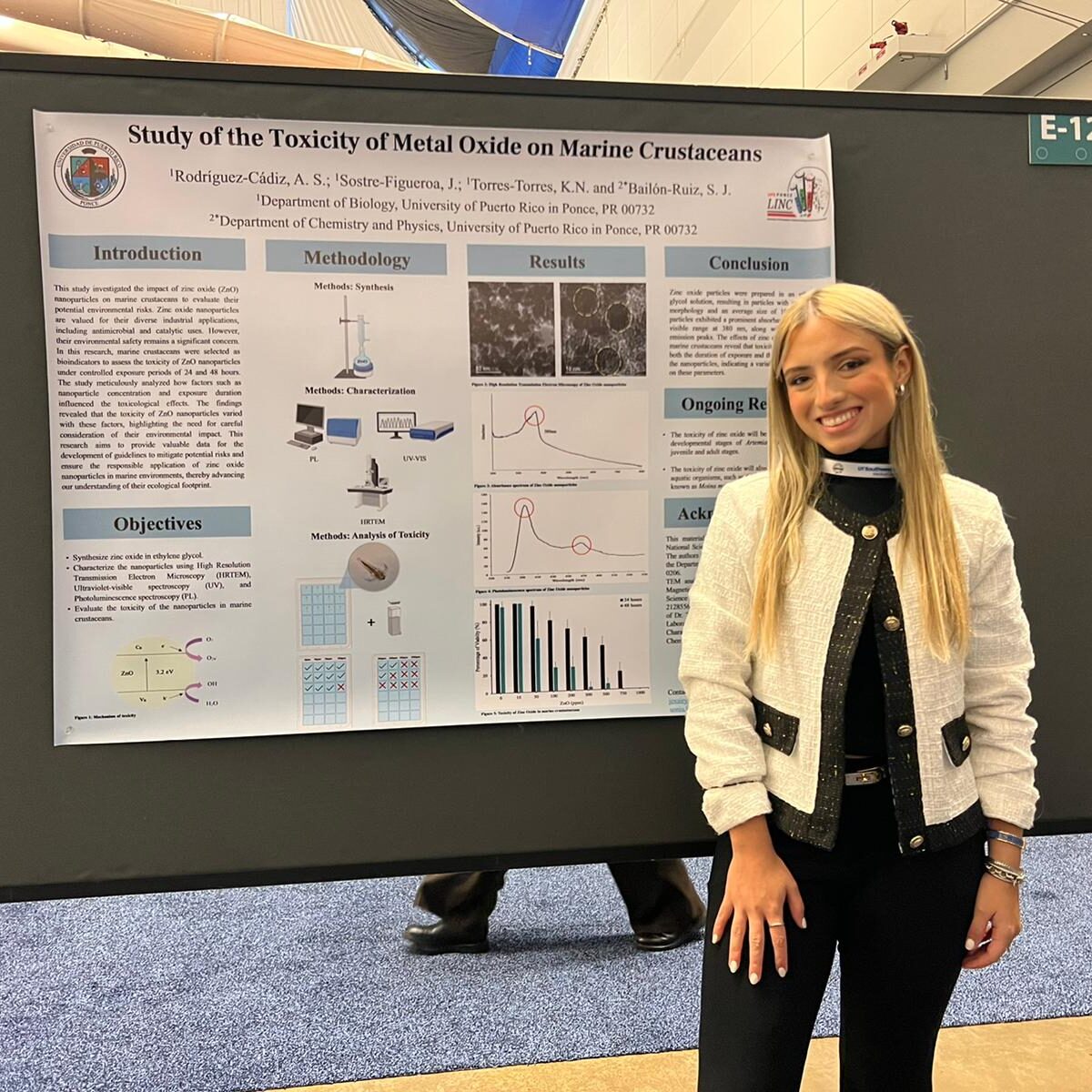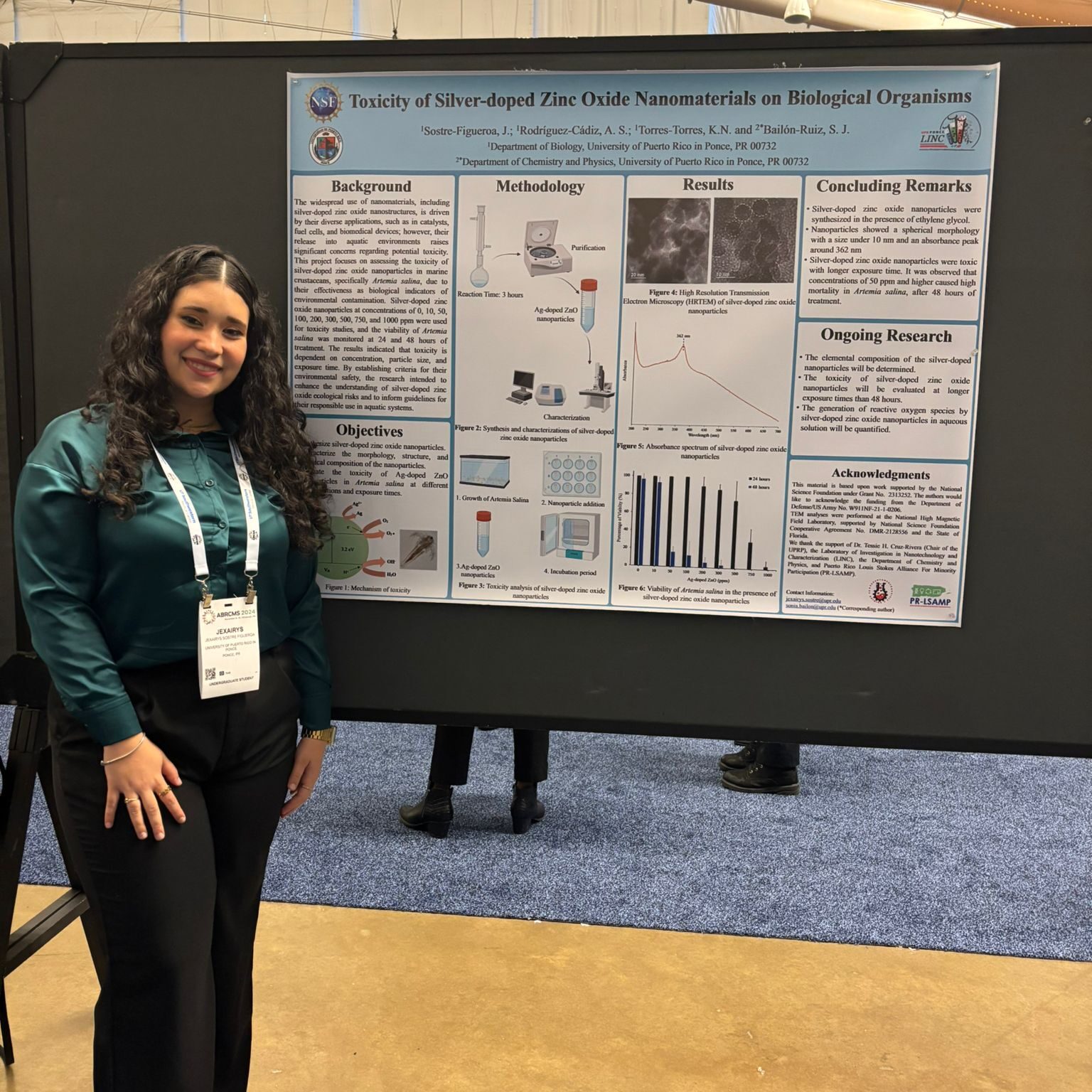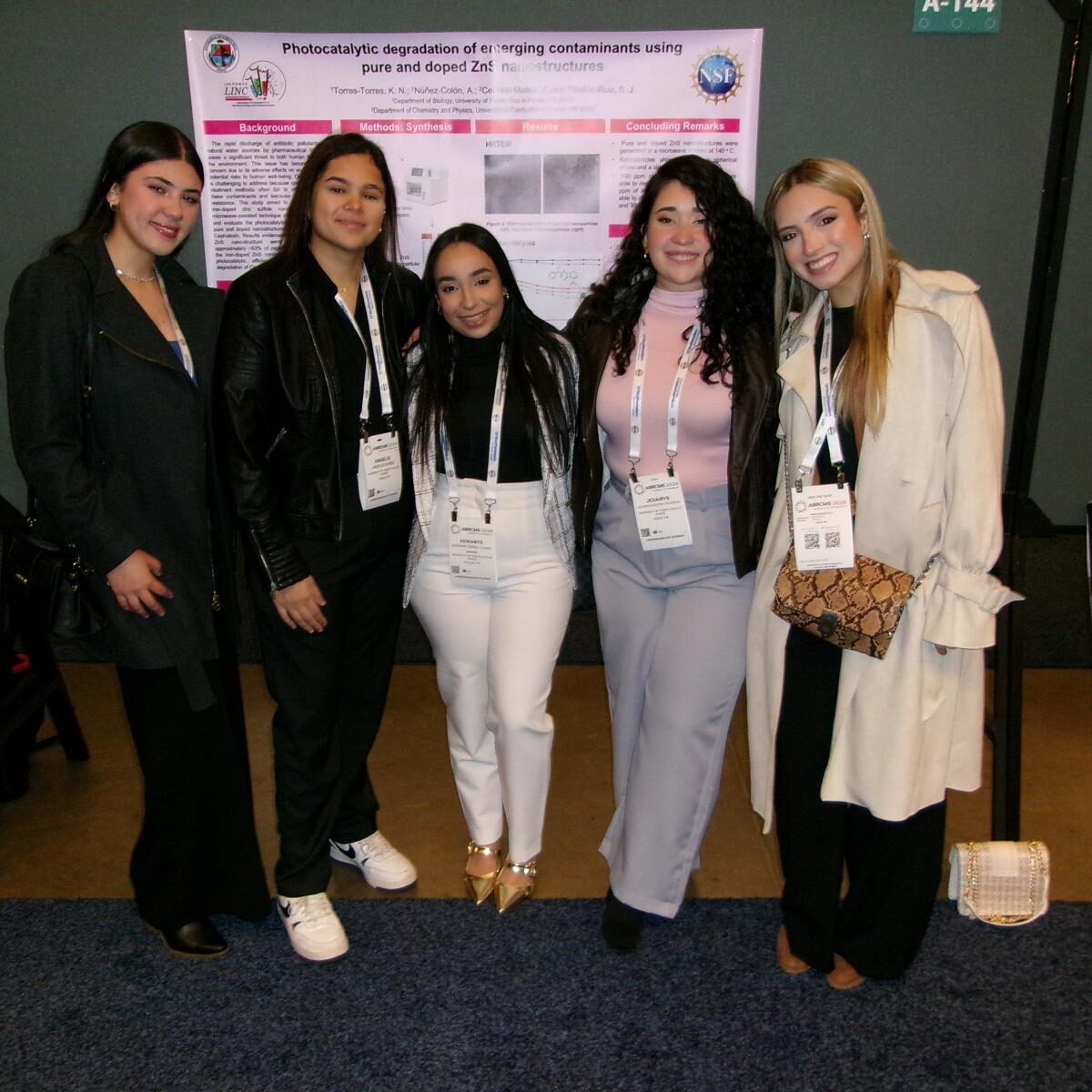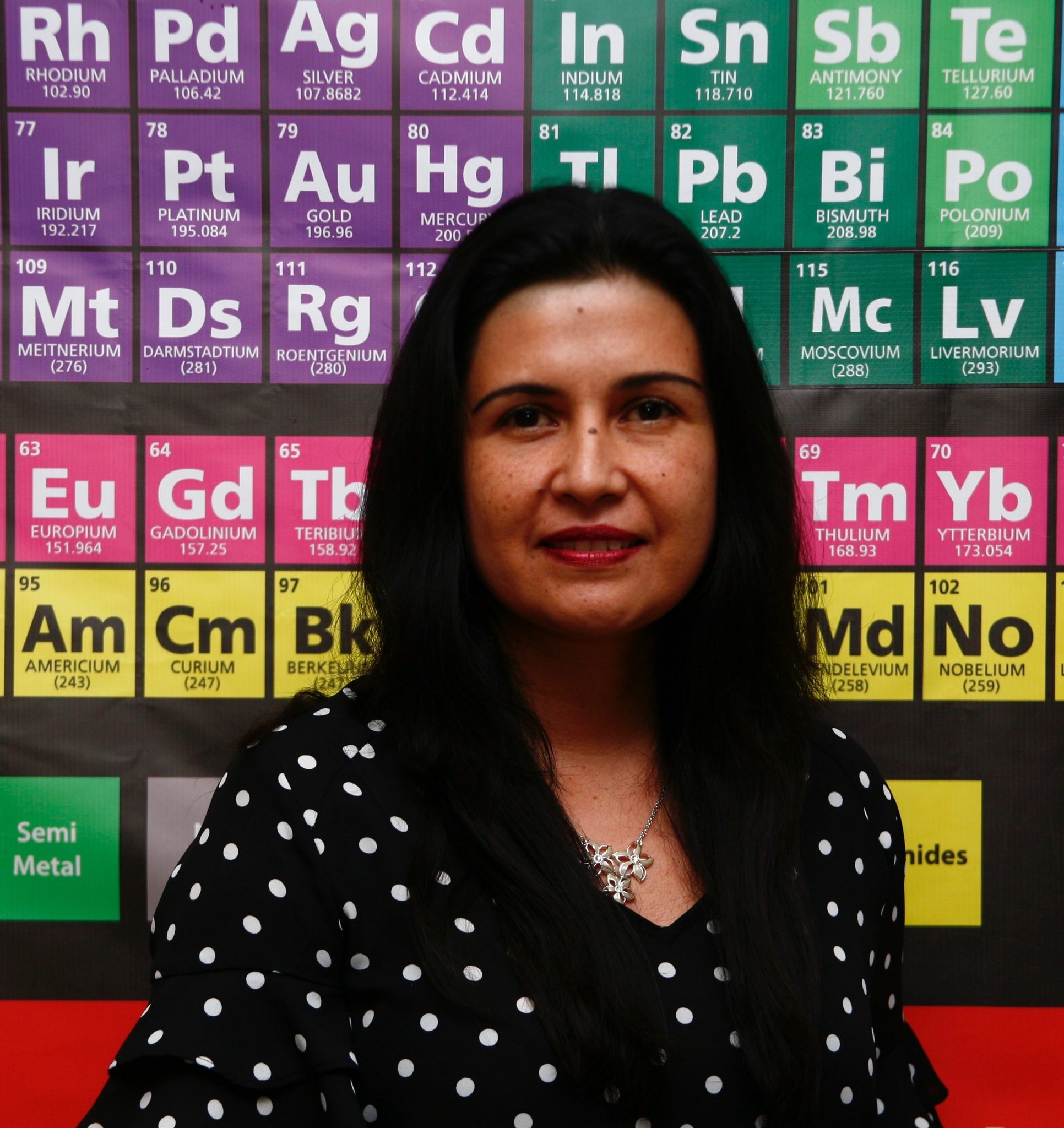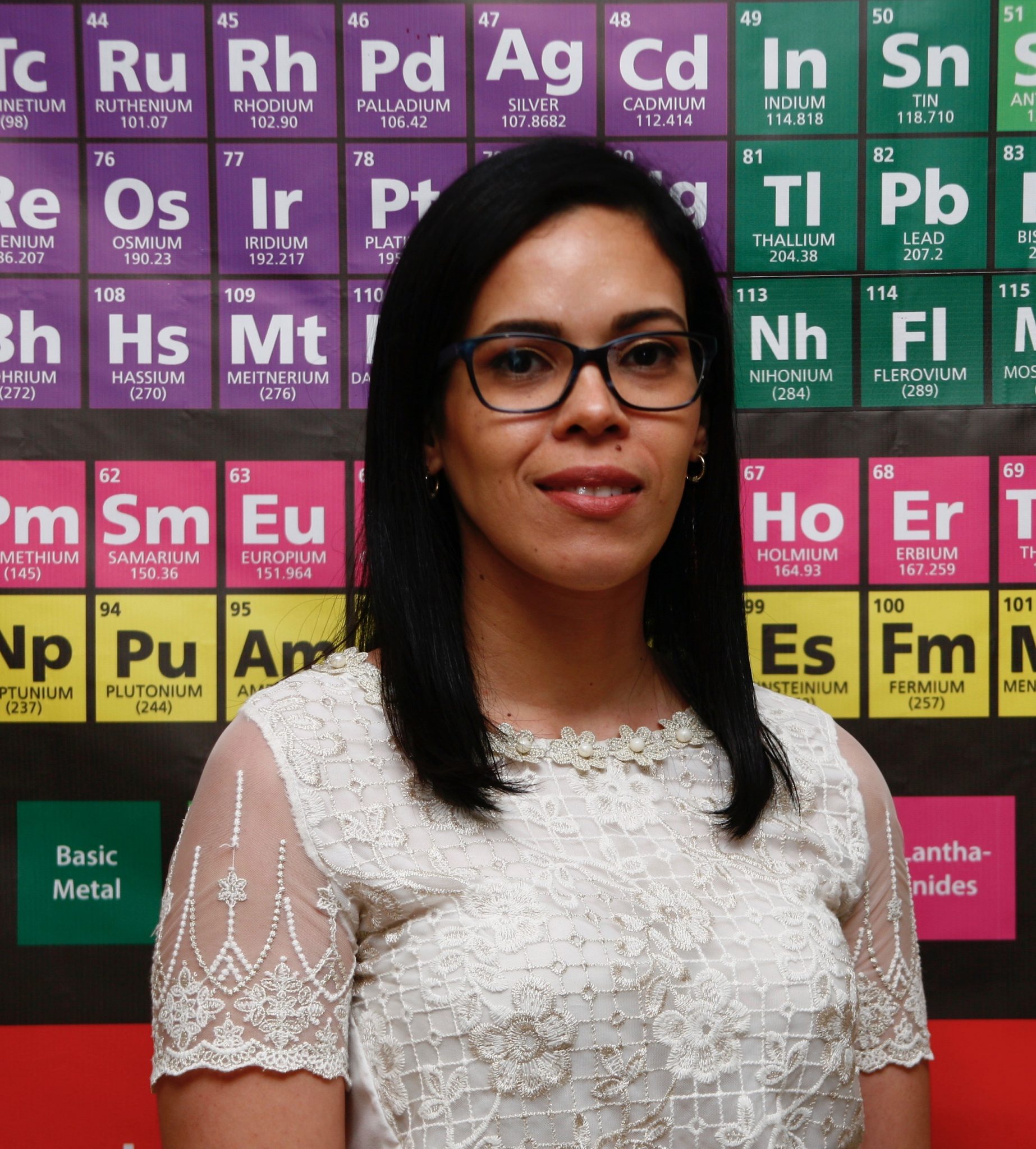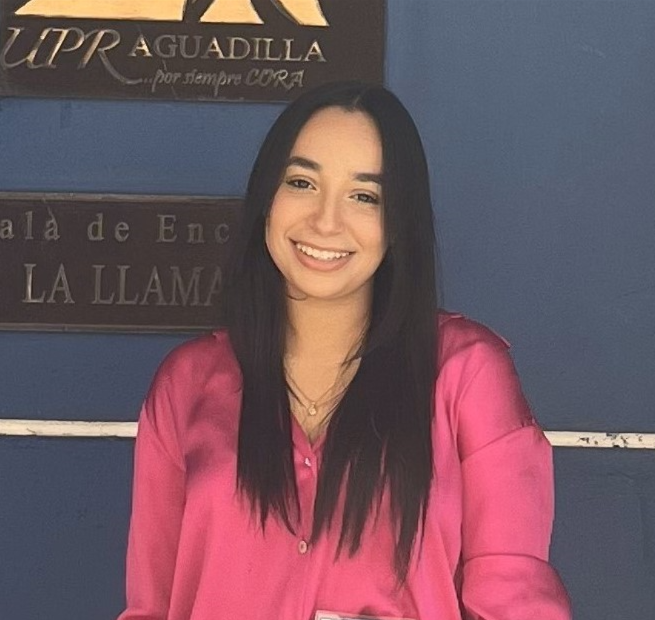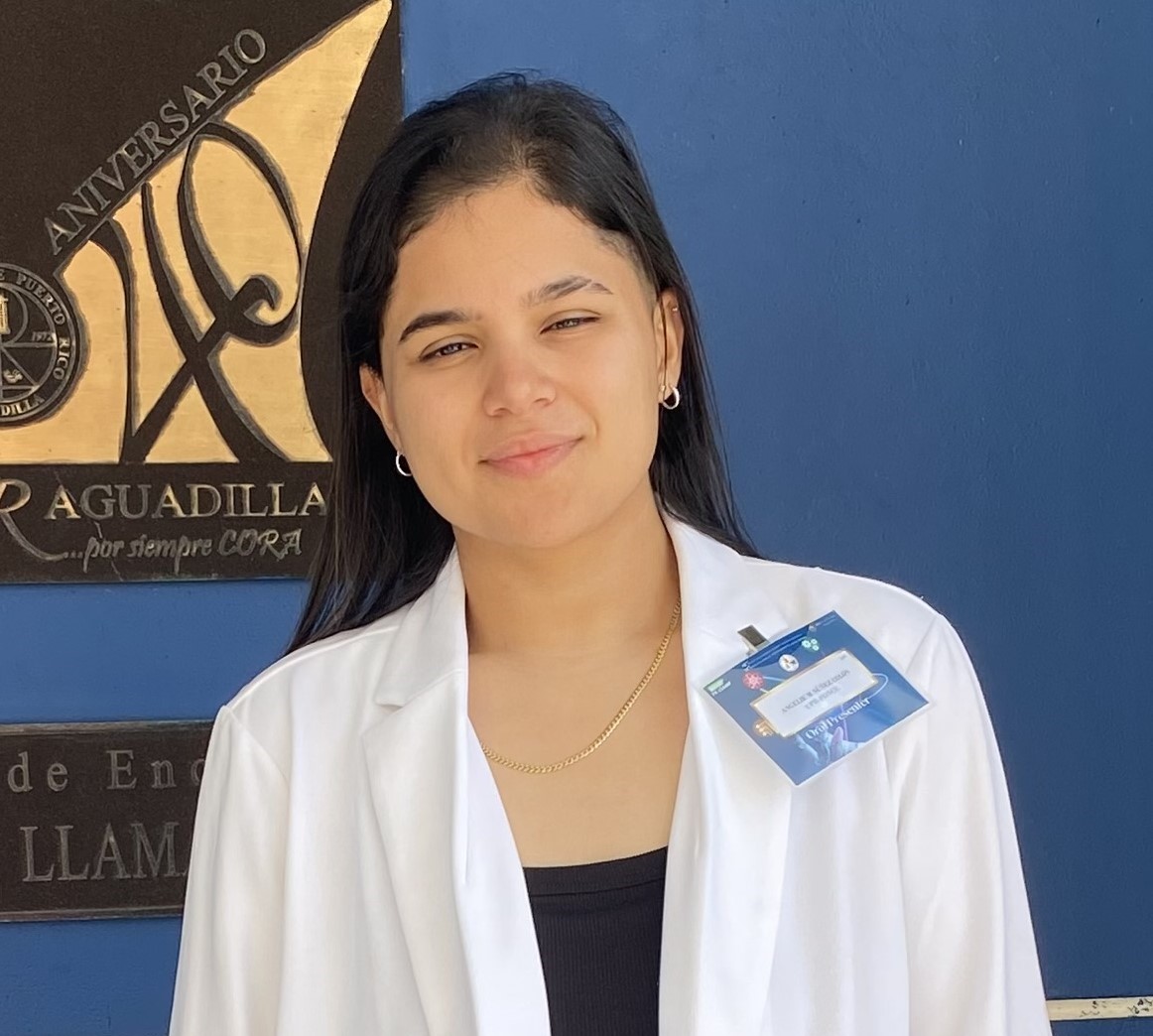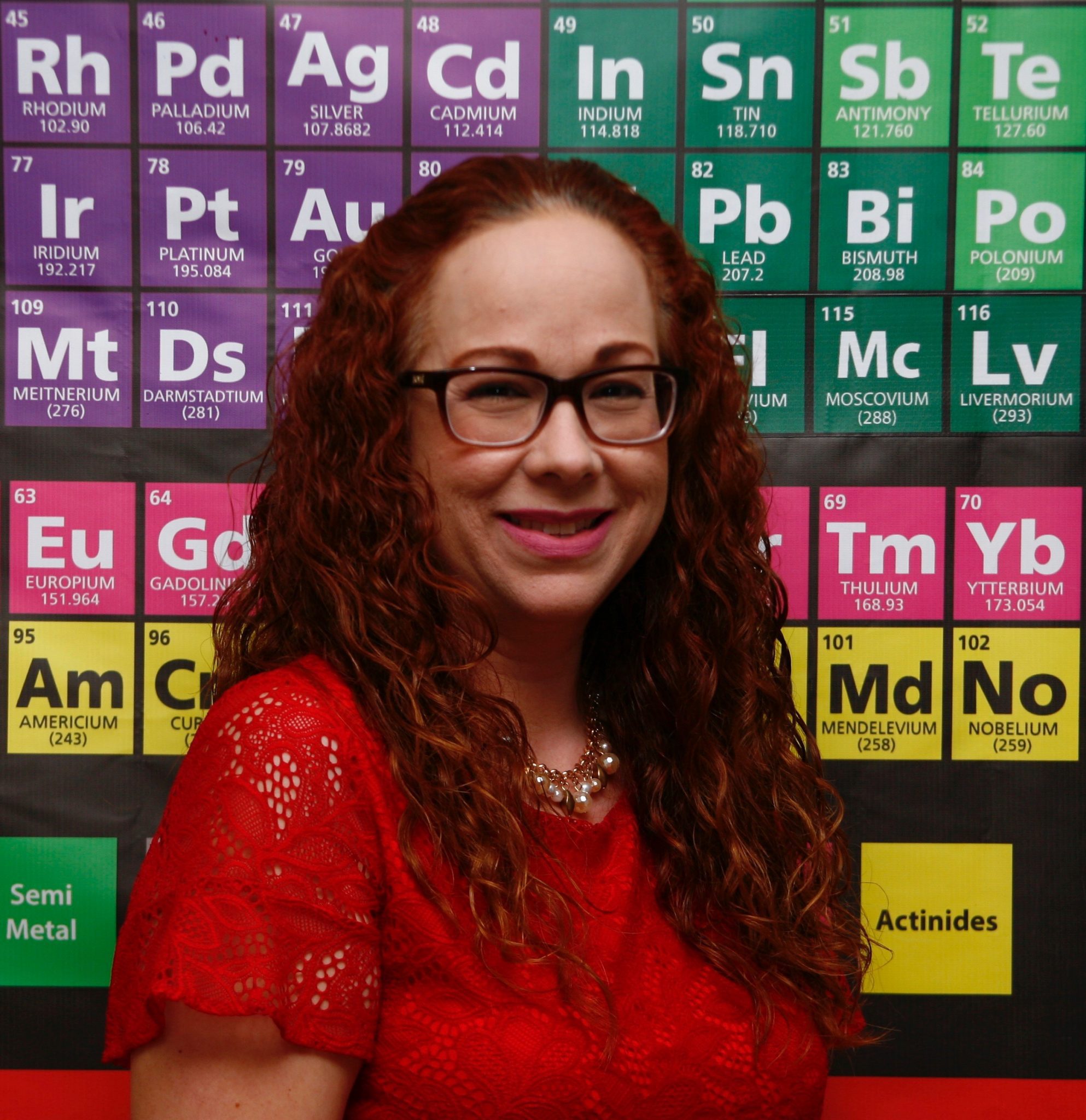
NSF Project #2313252: Nanoscale Interaction of Engineered Quantum Dots with Cephem Skeleton
Department of Chemistry and Physics Federal Project
Advanced Quantum Dots for Photocatalytic Degradation of Pharmaceuticals
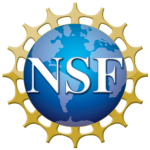
Overview
Antibiotics are a common contaminant in surface water due to their extensive use in healthcare, agriculture, and food production. This contamination poses serious threats, including:
1. Emergence of antibiotic resistance genes (ARGs) in aquatic life.
2. Decline in microbial diversity, affecting crucial processes like carbon cycling and primary productivity.
3. Health issues in humans, such as reproductive problems and muscle weakness, from long-term ingestion of contaminated water.Current water treatment methods like coagulation, adsorption, and membrane technologies fail to degrade these antibiotics, merely transferring them from one phase to another. Our research focuses on developing new techniques to destroy these compounds, preventing their accumulation in aquatic environments. We aim to achieve this by exploring the nanoscale interactions between engineered quantum dots and common antibiotic components.
Intellectual Merit
Quantum dots (QDs) are photoactive nanomaterials that can generate excitons and free radicals to break down organic compounds. However, their efficiency is limited by high exciton recombination rates, which reduce free radical production. Our goal is to enhance QDs by doping them to create nanostructures with improved capabilities for generating reactive oxygen species, which can effectively destroy antibiotics.
Key Objectives
1. Enhance Optical and Magnetic Properties:
– Develop new energetic states within QDs to improve their optical and magnetic characteristics.2. Measure Nanoscale Interactions:
– Use Liquid Chromatography-Mass Spectrometry (LC-MS) to study interactions between engineered QDs and antibiotics with cephem skeletons.3. Identify Derivative Products:
– Determine the byproducts formed from the interaction of light-activated doped QDs and antibiotics using LC-MS.By achieving these objectives, we will create doped QDs that enable fast and efficient photocatalytic degradation of drugs. Additionally, incorporating magnetic properties will allow for quick recovery and reuse of these nanomaterials, opening up new possibilities for designing advanced water treatment devices.
Broader Impacts
The outcomes of this project will provide critical scientific insights into the interactions between engineered QDs and antibiotic structures. These findings will be valuable for industry and governmental agencies involved in developing new environmental remediation technologies.
Impact on the University of Puerto Rico – Ponce (UPRP)
This project will:
– Strengthen the research community within UPRP.
– Contribute to the development of innovative research areas.
– Disseminate results through peer-reviewed publications, interdisciplinary conferences, and workshops.
– Offer a Special Topic Course in Nanoscale Science, equipping undergraduate students with the knowledge and skills to succeed in their studies and future careers.As a Minority Hispanic Serving Institution, UPRP benefits from this project by providing its students with the education and research opportunities needed to excel in the scientific community and pursue advanced studies or enter the workforce.
Join us in revolutionizing water treatment and creating a cleaner, safer environment for future generations. Explore the exciting possibilities that doped quantum dots offer in combating water contamination.
Results: Synthesis
In the following section, the recent results regarding the one-step microwave-assisted synthesis of ZnS and Fe-doped ZnS quantum dots will be presented. This section explores the impact of Fe doping on the properties of these quantum dots, examining how varying the dopant content influences their characteristics. Additionally, the effect of different reaction temperatures on the synthesis process is evaluated. The fluorescence of the quantum dots at various Fe concentrations was also analyzed, providing a comprehensive understanding of how Fe content affected their optical properties.
Effect of Dopant
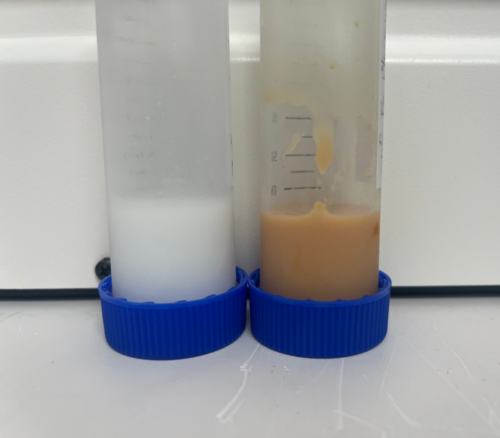
Synthesis of bare ZnS (left) and Fe-doped ZnS (right).
Effect of Temperature
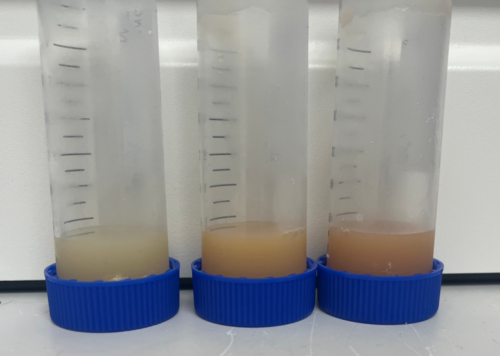
Synthesis of Fe-doped ZnS nanoparticles at 140 °C at different percentages of doping agent: 1% (left), 3% (center) and 5% (right).
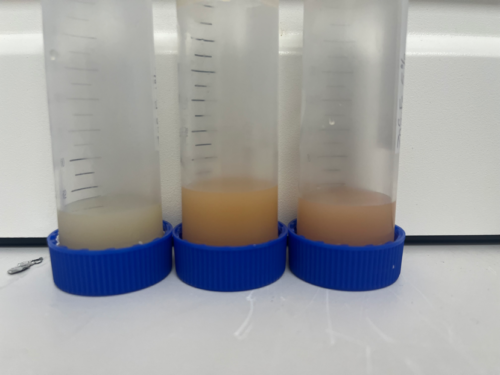
Synthesis of Fe-doped ZnS nanoparticles at 160 °C at different percentages of doping agent: 1% (left), 3% (center) and 5% (right).
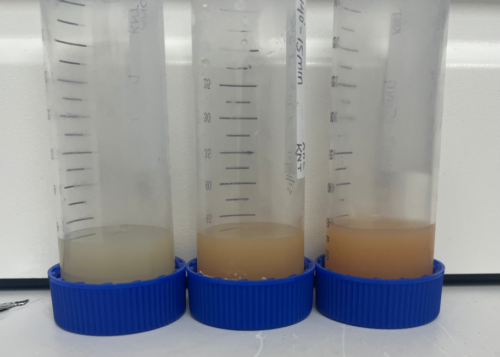
Synthesis of Fe-doped ZnS nanoparticles at 180 °C at different percentages of doping agent: 1% (left), 3% (center) and 5% (right).
Fluorescence

ZnS at 140°C, 160°C, and 180°C without irradiation (left) and with irradiation (right), (λ = 302 nm).

Fe-doped ZnS at 1%, 3% and 5% without irradiation (left) and with irradiation (right), (λ = 302 nm).
Results: Characterization
Next, TEM images and ED patterns of ZnS and Fe-doped ZnS quantum dots are presented. This section provided detailed visual and structural analyses, showcasing the morphology and crystallographic information of the synthesized quantum dots. The TEM images highlighted the size and shape variations influenced by Fe doping, while the ED patterns offered insights into their crystalline structure. Through these visualizations, a deeper understanding of the material’s microstructure and the effects of Fe incorporation on the quantum dots was achieved.
Transmission Electron Microscopy (TEM) and Electron Diffraction (ED)
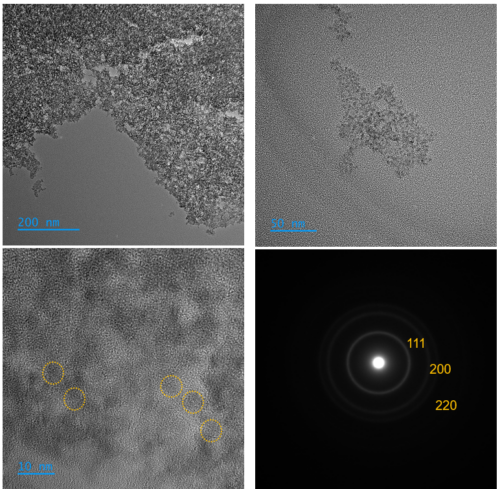
TEM images and ED pattern of bare ZnS.
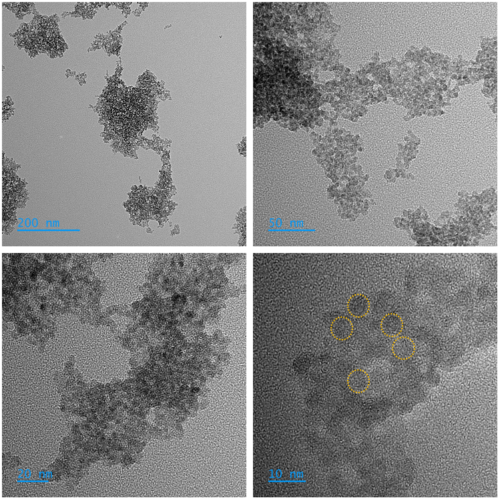
TEM images of 1% Fe-doped ZnS.
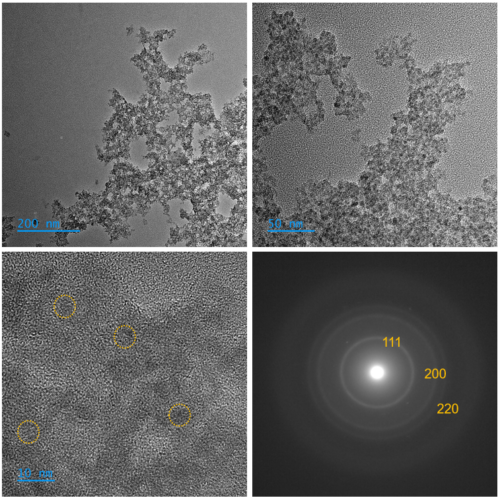
TEM images and ED pattern of 3% Fe-doped ZnS.
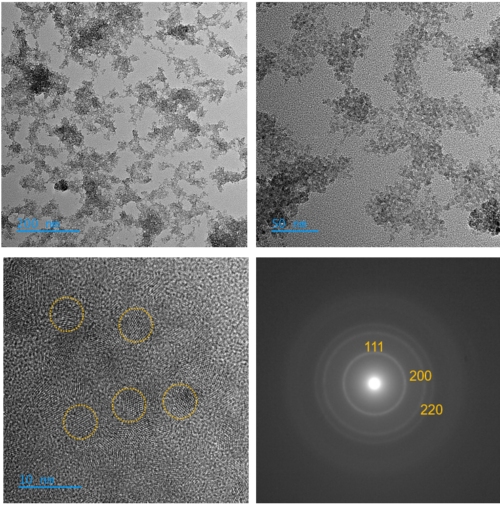
TEM images and ED pattern of 5% Fe-doped ZnS.
Laboratory of Investigation in Nanotechnology and Characterization (LINC)
The Laboratory of Investigation and Characterization (LINC) is equipped with state-of-the-art instrumentation to support advanced research and analysis. Our available equipment includes the IRAffinity-1S with ATR, Shimadzu; LC Prominence 2030 PLUS with autosampler, Shimadzu; GC-FID Nexis 2030 with autosampler, Shimadzu; AA 7000, Shimadzu; NMReady 60 PRO, Nanalysis; UV-V 630, Jasco; RF 6000, Shimadzu; CEM Mars 6; IRSpirit, Shimadzu; IC CDD-10AVP, Shimadzu; UV-2700i, Shimadzu; and the 6530 Accurate-Mass Q-TOF LC/MS, Agilent. These cutting-edge tools enable precise and comprehensive characterization of various materials, ensuring high-quality research outcomes.
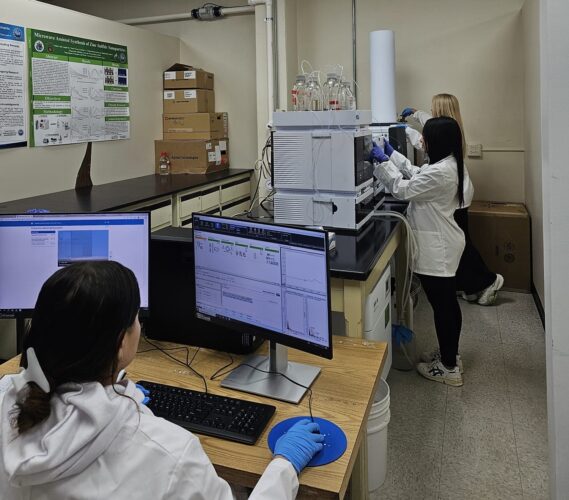
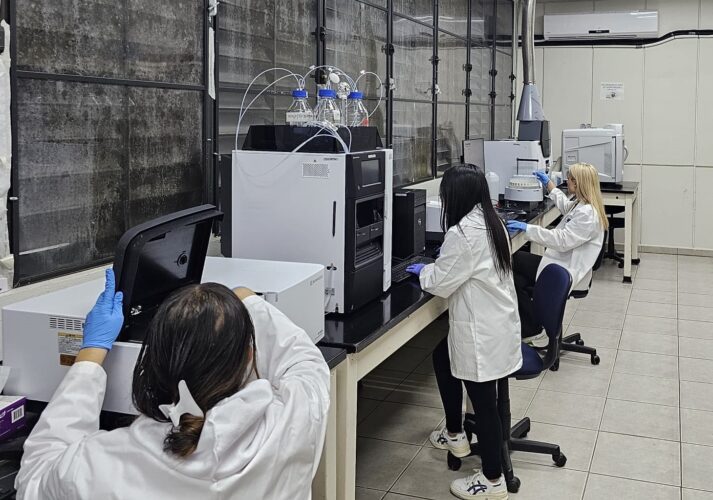
News

Congratulations to Angelie M. Núñez Colón for her outstanding achievement at the Annual Biomedical Research Conference for Minoritized Scientists (ABRCMS) 2024, held in Pittsburgh, PA, from November 13–16, 2024. Angelie was awarded for her poster presentation in the Chemistry division, a testament to her dedication and the high quality of her research.
Once again, congratulations to Angelie M. Núñez Colón on this significant milestone in her academic journey.
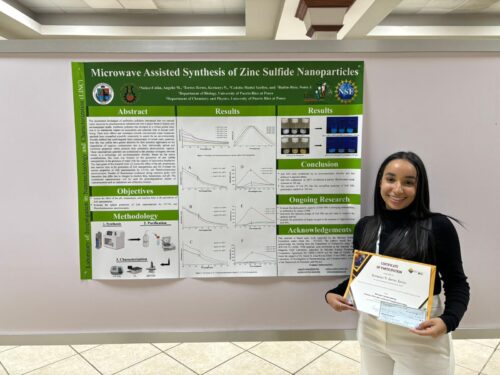
Kerianys Torres-Torres presented her research work at the poster session of the 46th Senior Technical Meeting held last November 4, 2023, in Guayanilla, Puerto Rico. Her poster titled: «Microwave Assisted Synthesis of Zinc Sulfide Nanoparticles» was recognized with a second place. This event provides a platform for undergraduate students to present their research work. Kerianys’s outstanding performance reflects her dedication and the high quality of her research, marking a significant milestone in her academic journey. Congratulations Kerianys!
Events
XXVI Academic Research and Creation Congress
May 15, 2025
Ponce, PR
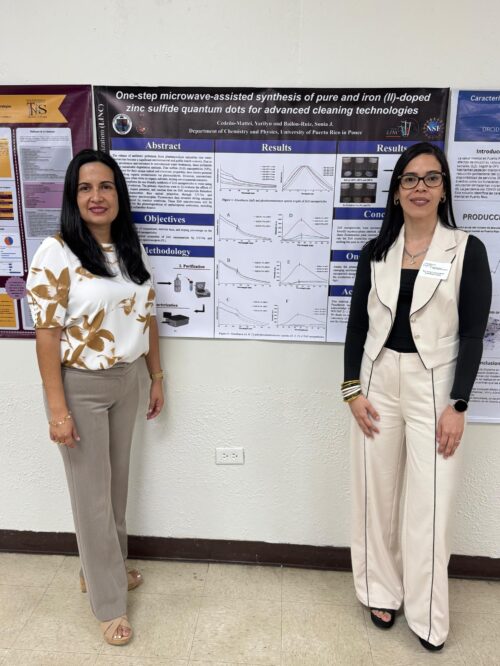
Dr. Bailón-Ruiz and Dr. Cedeño-Mattei presenting their posters at the XXVI Academic Research and Creation Congress.
XVII Research and Creation Student Congress
May 9, 2025
Ponce, PR
43rd Puerto Rico Interdisciplinary Scientific Meeting (PRISM) & 58th ACS Junior Technical Meeting
April 26, 2025
Río Piedras, PR
2025 Emerging Researchers National (ERN) Conference in STEM
April 4-6, 2025
Atlanta, GA
ACS Spring 2025 Meeting & Expo
March 23-27, 2025
San Diego, CA
ABRCMS 2024
November 13-16, 2024
Pittsburgh, PA
XVI Research and Creation Student Congress
May 10, 2024
Ponce, PR
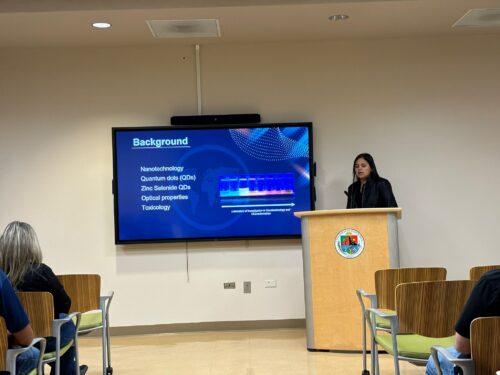
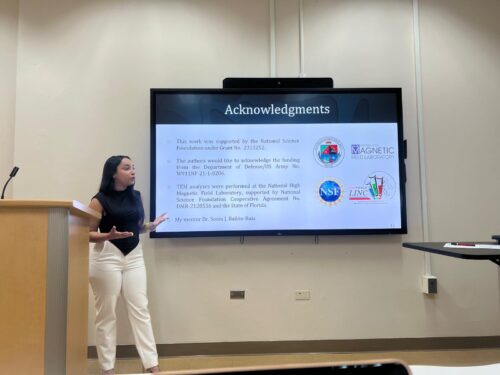
Angelie Núñez-Colón and Kerianys Torres-Torres presenting her respective research works at the XVI Research and Creation Student Congress held on the University of Puerto Rico in Ponce.
XXV Academic Research and Creation Congress
May 3, 2024
Ponce, PR
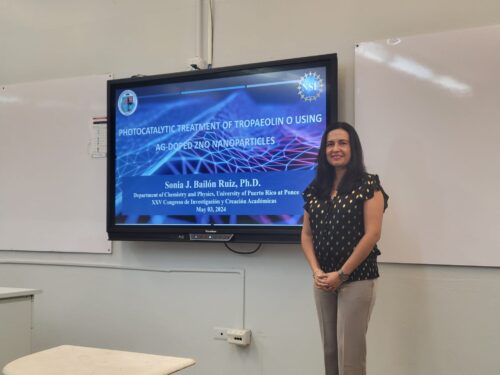
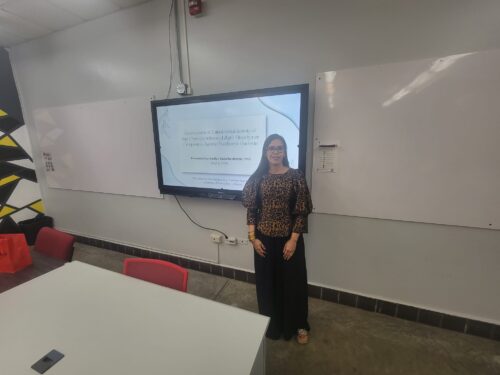
Dr. Sonia Bailón-Ruiz and Dr. Yarilyn Cedeño-Mattei presenting their research at the XXV Academic Research and Creation Congress held on May 3, 2024 at the University of Puerto Rico in Ponce.
42nd Puerto Rico Interdisciplinary Scientific Meeting (PRISM) & 57th ACS Junior Technical Meeting
April 20, 2024
Aguadilla, PR
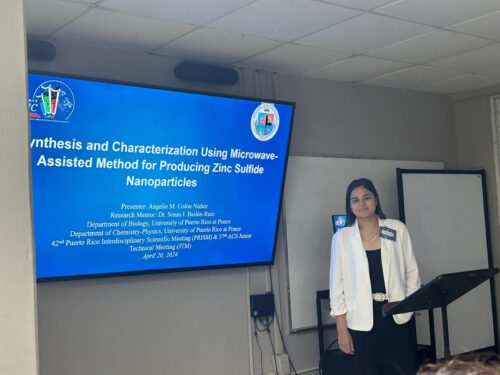
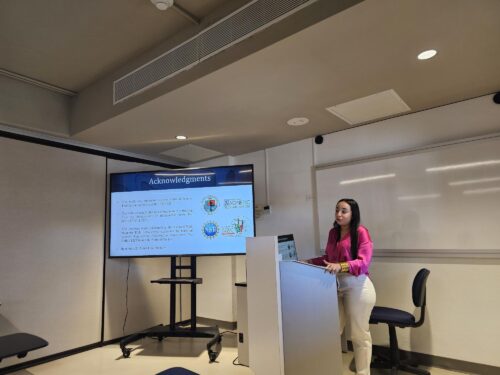
Angelie Núñez-Colón and Kerianys Torres-Torres presenting her respective research works at the oral presentations session of the 42nd Puerto Rico Interdisciplinary Scientific Meeting (PRISM) & 57th ACS Junior Technical Meeting held on Aguadilla, Puerto Rico.
Emerging Researchers National (ERN) Conference in STEM
March 14-16, 2024
Washington, D.C.
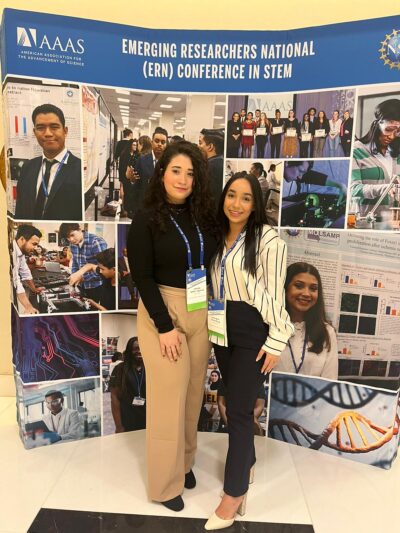
Kerianys Torres-Torres and her laboratory partner, Jexairys Sostre-Figueroa, at the ERN Conference in STEM.
46th American Chemical Society Senior Technical Meeting – “Chemistry: Where ideas collide and transformations begin”
November 4, 2023
Guayanilla, PR
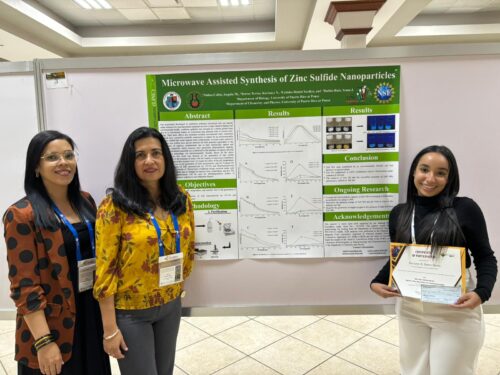
Kerianys Torres-Torres and her mentors, Dr. Sonia Bailón-Ruiz and Dr. Yarilyn Cedeño-Mattei, at the poster session of the 46th Senior Technical Meeting held last November 4, 2023, in Guayanilla, Puerto Rico.
Recent Publications
Reference:
Bailón-Ruiz, Sonia; Cedeño-Mattei, Yarilyn; Alamo-Nole, Luis. Fe-Doped ZnS Quantum Dot Photocatalysts for the Degradation of Cefalexin in Water. Micro 2025, 5, 31; https://www.mdpi.com/3369678
Reference:
Bailón-Ruiz, Sonia; Cedeño-Mattei, Yarilyn; Torres-Torres, Kerianys N.; Núñez-Colón, Angelie M. Degradation of cephalexin in the presence of pure and doped ZnS nanostructures. Ceiba. Year 24 No. 1 [Second Era] August 2024 – May 2025, pp. 94-102.
Reference:
Bailón-Ruiz, S.J.; Núñez-Colón, A.M.; Torres-Torres, K. Cedeño-Mattei, Y. Fast microwave-irradiation assisted synthesis of pure and iron-doped zinc sulfide nanoparticles. MRS Advances 2025; https://doi.org/10.1557/s43580-025-01164-4
Reference:
Bailón-Ruiz, S.J.; Cedeño-Mattei, Y.; Núñez-Colón, A.M.; Torres-Torres, K.Fast One-Step Microwave-Assisted Synthesis of Iron-Doped ZnS for Photocatalytic Applications. Crystals 2024, 14(8), 699; https://doi.org/10.3390/cryst14080699
Reference:
Lugo-Ruiz, A.A.; Bailón-Ruiz, S.J. Titanium Nanostructures: Advancing Photocatalysis in Complex Systems. Photochem 2024, 4, 222–232; https://doi.org/10.3390/ photochem4020014
Reference:
Bailón-Ruiz, Sonia; Cedeño-Mattei, Yarilyn. Development of Quantum Dots Nanosensors for Heavy Metals Detection. Ceiba. Year 23 No. 1 [Second Era] August 2023 – May 2024, pp. 81-90.
Reference:
Cedeño-Mattei, Yarilyn; Bailón-Ruiz, Sonia. Advances in MgO Nanoparticle Synthesis: Pathways to Future Antimicrobial Applications. Ceiba. Year 23 No. 1 [Second Era] August 2023 – May 2024, pp. 75-80.
Our People


